Landwards

The professional journal for the Institution of Agricultural Engineers
In
See iagre.org for the latest information
this issue...
People – Reflecting on purpose
Preview – Feeding the future
Practice – Rural roads
Technical – Nitrogen use efficiency
@IAgrE
AGRICULTURE
FORESTRY ENVIRONMENT AMENITY
HORTICULTURE
“The launch of REnvP is a landmark moment for environmental professionalism, providing more individuals with the opportunity to gain professional registration and achieve external verification of their competence.”
 Dr Emma Wilcox Chief Executive Officer of the Society for the Environment
Dr Emma Wilcox Chief Executive Officer of the Society for the Environment

Progress your career with REnvP
launched in partnership between the Institution of Agricultural Engineers (IAgrE) and the Society for the Environment is the new grade of Registered Environmental Practitioner (REnvP).
This is a huge step forward to ensure high standards of professionalism and proven competence are met by those working to enhance and protect the environment across every sector.
This registration is timely and relevant for agricultural engineering and the associated technology sectors and the intention is that professionals in the industry will apply. The industry includes many different disciplines which need people to apply a professional approach and the Registered Environmental Practitioner grade is ideal for this.
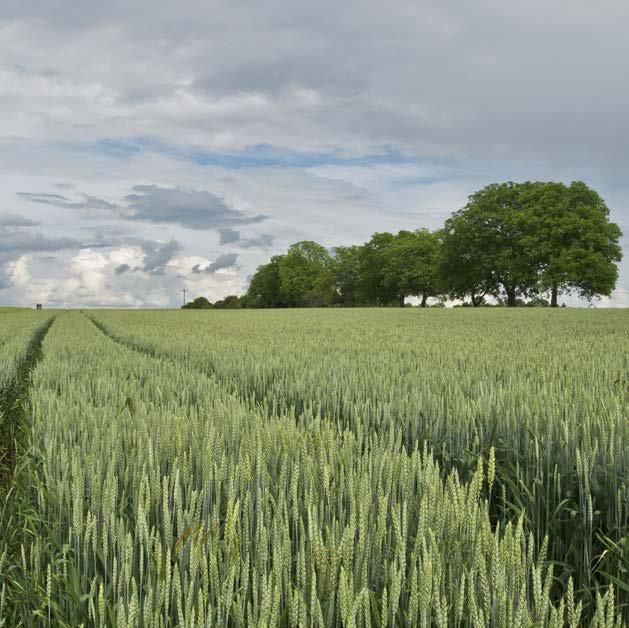
Why should I register?
• Improve your career and salary prospects
• Stand out from the field
• Join a network of dedicated professionals
• Demonstrate your competence and skills.
Register through IAgrE now:
t: +44 (0) 1234 750876

e: membership@iagre.org
w: www.iagre.org
Although the standards are high, IAgrE makes the process simple.

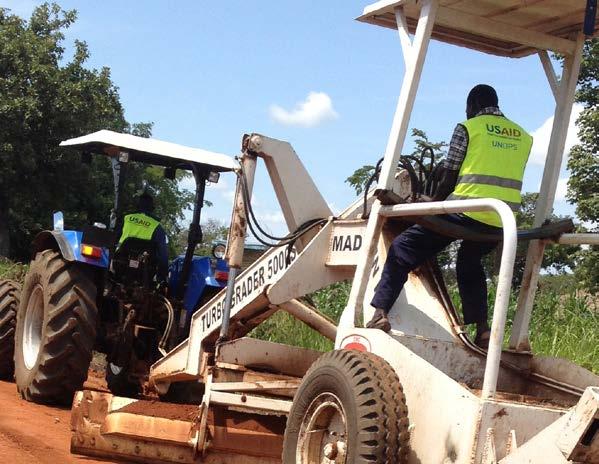

Landwards Autumn 2023 Contents: 4 Agricultural engineering news and views Perspectives from the people and profession 8 From the CEO’s desk The latest Institution activity 10 The President’s musings Looking to the future 12 Biosystems engineering A review of some of the latest papers 14 Preview – Landwards conference Agricultural engineering –feeding the future 20 People– Engineering society Student group news 22 Practice– Rural roads The use of agricultural machinery in road building 26 Practice – Autonomous machinery New safety guidance 28 Opinion –Archaeological data The missing link twixt precision ag and archaeology 30 Technical – Nitrogen use efficiency An explainer of current Landwards is published on behalf of the IAgrE by FarmSmart Publishing Limited. Editor – Andy Newbold 01539 620255 andy@farm-smart.co.uk Design – Ann Newbold, Smart Design and Print www.smartdesignprint.co.uk The views and opinions expressed in individual contributions are not necessarily those of IAgrE or the editor. Landwards is compiled from information received by IAgrE, but no responsibility can be accepted by the Executive, the Publishers or the Editor in respect of errors or omissions. The editor does reserve the right to edit any material submitted for publication. Material from this publication may be quoted or reported on condition that full credit is given to Landwards and to the author together with the date of publication and volume number. In the interest of factual reporting, reference to trade names and proprietary products may be inevitable. No endorsement of the named products or manufacturers is intended and no adverse criticism is implied of similar products which are not mentioned. © The Institution of Agricultural Engineers (IAgrE) ISSN 1363-8300 Company registration no. 648071, Charity no. 257303 32 Membership matters Branch activity and the latest membership activity 44 The Douglas Bomford Trust 46 EurAgEng The latest news from Europe 48 International news Test centre with new capabilities 50 Research roundup Some of the latest academic projects
Editors Welcome
Does anyone remember summer? It was that epic dry month from the middle of May to the end of June, and then nothing but rain. I suppose we should expect this of the ‘classic’ British summer now.
According to the weather station (rain gauge in wall top, supplemented by ‘the bucket’ if required) there was over 225mm of rain in July. Cue gnashing of teeth from all those farmers desperate to harvest a decent crop. Although a month later, agricultural engineering’s contribution is noticeable as the remaining harvest has been gobbled up in quick order.
Alongside the usual features, this edition previews the Institutions annual conference with a look at the speakers and the theme of feeding the future, more on p14.
Whilst it’s easy to focus on innovation in the industry, the editor was pleased to receive a fascinating article on the efficient use of agricultural engineering technology in rural road
building, have a read from p22. Autonomous agricultural machines have become a more common sight in the field, see membership matters from p32. This has demonstrated that clear guidance is needed to safely operate these units, so it’s good to see that with industry input (including from IAgrE members) new guidance has been launched to support safe and secure use of crop robots, turn to p26 for more.
With an eye to the future requirements of Net Zero in farming, Technical from p30 looks at how nitrogen use efficiency is being improved in the field.
I hope this edition finds you well and as ever, please pass on feedback and thoughts for future editions.
Andy Newbold
 Andy Newbold Hon FIAgrE Editor andy@farm-smart.co.uk
Andy Newbold Hon FIAgrE Editor andy@farm-smart.co.uk
Reminder: Associate Members can upgrade free to Member grade
If you are an existing Associate Member you have the option to upgrade to Member grade providing you have completed 5 or more years in a relevant career.
However, if you prefer, you can remain as an Associate member for as long as you wish.
For more information please see https://iagre.org/upload/1621421462.pdf
or contact Alison at membership@iagre.org
IAgrE Professional Environmental Registration with SocEnv
The Institution of Agricultural Engineers (IAgrE) offers it’s members Professional Registration with the Society for the Environment. Chartered Environmentalist (CEnv) and Registered Environmental Practitioner (REnvP). This video explores the benefits of registration and the registration process with IAgrE with its registered members. Contact Alison, IAgrE Membership Secretary, for more information.
https://iagre.org/secretariat
4 Landwards Autumn 2023
Watch again
Don’t forget that most of the Institutions lunchtime lectures, some branch meetings and last year’s conference papers are available on the Institutions YouTube channel.
https://www.youtube.com/@ iagrevideos5783/videos

Highlights include:
Recruitment and Retention, Paul Harris , REAL Success
One of the biggest challenges for businesses is finding the right staff. However, once you have found good employees, retaining them can be just as difficult. During this lunchtime lecture, Paul Harris provides practical tips on how your business can stand out and become an employer of choice.
Paul Harris is the CEO and founder of REAL Success, a consultancy that specialises in the “people life cycle” needs of agri-businesses. Paul and his team help companies manage their
staff effectively from recruitment to retirement. He is a renowned thought leader in the UK, frequently speaking at events on people development and staff management topics.
The importance of consistent quality training on a Global scale
Richard Charles & Charlie Rollason from AGCO talk to us about the Global Education of Technicians. They discuss what AGCO have done in regards to recognising the difference between markets across the world and how they train and educate their Global Technicians and align their training offering to ensure consistent, quality training across the world.
IAgrE Members sustainable tech offer from Dell
Transform your tech experience while preserving the environment with Dell Technologies! Dell’s cutting-edge sustainable devices are designed to help reduce your environmental impact and take a step towards a better future. With built-in features that revolutionize device management, you can ensure sustainable management throughout the device’s life cycle.
As an exclusive member, you have access to unbeatable prices for our latest line of sustainable devices. Combine your member discount with special offers to maximize your savings. Upgrade your tech game today and make a positive impact on the planet.
Get a coupon code and get your sustainable device from Dell Technologies.

• Visit the Exclusive Member Offer page https://email.cloud. secureclick.net/c/4214?id=28 2501.5103.1.1e268e0de7b7e658b8268ab671226647
• Enter your email and IAGRE as your Unique Member Password.
• Apply coupon code at the Dell checkout! Or by referencing your discount coupon code to our trusted advisor via chat/phone/ WhatsApp chat.
5 Landwards Autumn 2023
Hartpury unveils new skills framework to support digital transformation

Hartpury University and Hartpury College have unveiled the Digital Skills Framework in Agriculture, a national benchmark for education and training providers. The framework will act as a reference point for learners, teaching staff and businesses to support the future needs of the agricultural industry.
The document lays out the big picture for digital skills in agriculture and provides a model for assessing job requirements, personal proficiency, and development planning.
The practical resource is filled with tips and links to a variety of tools and introduces a new reference acronym for digital skills in agriculture, D-I-S-C-O (Data and insight, Innovate and improve, Safe and legal, Communicate and collaborate, Operations and activities). Each section contains several learning outcomes using a checklist model and the content has been created with input from fellow Landex Colleges Myerscough College, Chichester College, East Durham College, Abingdon and Witney College, Oaklands College and the Warwickshire College Group. Colleges and universities, other training providers, professional support services, and technology suppliers can all make use of the wide-reaching resource. Farmers and growers can also use the framework to assess the digital
capabilities in their business and develop these further.
Ultimately, it will help to create a common language and boost digital proficiency levels across the sector. This will ensure the industry and those working within it are best placed to embrace innovation in order to address challenges including feeding a growing population, the reduction of agricultural land and sustainability and climate change.
Tom Bradshaw, NFU Deputy President said:
“As farmers and growers our role is not just to produce the nation’s food. Our work also safeguards rural communities in some of the most challenging areas of the country. We do so when our businesses offer rewarding careers and attract new people to our industry and local areas. We must continue to be technology pioneers, building upon our wins.
“As I look forward, I see exciting new opportunities for people to develop and contribute in new ways. This Digital Skills Framework from Hartpury University and Hartpury College will help farmers and growers, as well as those who support us with learning and advice, understand the digital landscape and how we adapt and grow our people, as well as our businesses.”
Matt Bell, Professor and Director of Agriculture at Hartpury University and Hartpury College said:
“Digital technology and applications are already at the centre of our working lives. To make the most of the opportunities they present our agri-food industry will need people with the right digital skills to lead, manage and perform everyday tasks in our businesses. As adoption of new innovations increases, so the unit cost of inventions will decrease to become reachable for more farmers and growers. No longer will progress be led by the big, with the small left behind. More likely, fortune will increasingly favour those who adopt new ways of working with technology.”
Hartpury remains a leading choice for students wishing to study agriculture. With such a focus on digital skills and agri-technologies, the institution continues to create industry-ready graduates that are well placed to embrace innovation and drive change. In fact, 98% of Hartpury College students progress into employment, university or further study (Hartpury 2023), highlighting how well prepared they are for life after Hartpury. 97% of Hartpury University graduates are in employment, further study or other purposeful activity (Graduate Outcomes 2023).
6 Landwards Autumn 2023
LE-TEC announce the winners of Technicians for 2023 competition

The Land-based Engineering –Training and Education Committee (LE-TEC Ltd) are proud to announce the winners of their Technicians for 2023 competition. Designed to find and celebrate the UK’s best Technicians in the Land-based Engineering sector, entrants submitted a short video explaining a little bit about themselves: who they
were, how long they have been a Land-based Technician and why they enjoy their day-to-day job.
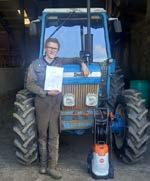
As an industry collaboration, the LE-TEC Ltd judging panel consisted of representatives from the Institution of Agricultural Engineers (IAgrE), British Agricultural and Garden Machinery Association
(BAGMA) and the Agricultural Engineers Association (AEA) alongside industry independents. Aiming to highlight the skills and passion for the sector, the judges were extremely impressed by the honesty shown in the entries received and after much deliberation they shortlisted their top three.

7 Landwards Autumn 2023
1st Place – Callum Adams Winning a STIHL 100 Plus Control Pressure Washer
2nd Place – Shannon Howe Winning a Makita UK Job Site Radio MR003GZ
3rd Place – Paul Thomson Winning a Makita UK 221 Piece Tool Kit E-10883
Upon hearing of his win, Callum commented
“getting recognition for the hard work we put in to this industry is a great feeling. I’m excited to be able to share my story and showcase land-based engineering to a wider audience and that next generation of talent!”
From the CEO’s desk
What a difference a year makes? I had a quick look back at my piece for Landwards from 12 months ago and I mentioned this thing called the sun and the excellent weather we’d had!

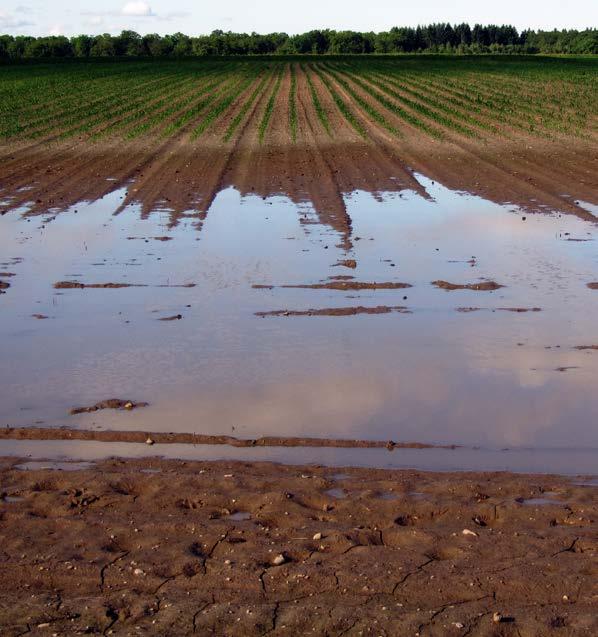
8 Landwards Autumn 2023
Certainly in my part of the world its been a complete washout with what feels like a daily dose of heavy rain. Only now as I write this does there seem signs of some warm sunny weather to aid harvesting. With these weather breaks then comes the
challenge of laid corn and waterlogged fields, of which there are plenty around Cheshire and Staffordshire!

A changing climate
So is this just a poor summer or is it the effect of climate change? Some would certainly argue the latter. Heat waves and wild fire events are happening far more regularly, and data tells us that the oceans are warming, the ice caps are melting and the planets temperature is increasing.
As one of our member’s pointed out to me though, the earth itself has significant power to damage the climate without human intervention, for example volcanoes. The big difference of course is that we have a choice as to whether we continue to damage it or do something about it.
Sustainable food
Our last couple of conferences have focussed in on sustainability, alternative fuels, etc and this year’s conference will also follow this theme. You may have seen that we have just released some communication on our programme for the 1st November and we will focus in on sustainable food production, which is a subject that continues to gain importance. We have some excellent speakers from Deere and AGCO, and also some insights into futuristic crop growing and horticultural technology. To ensure inclusivity, our conference will be online this year, thus alleviating any geographic boundaries and travel issues. Booking is now live and please do forward to those outside IAgrE that may find it of interest.
Despite the poor weather mentioned above, the annual Cereals event was held in glorious unspoilt sunshine back in mid-June. The event this year was held at Thoresby Estate in Nottinghamshire, which interestingly for me is also where the British Ploughing Championships will be held in October 2024.
Whilst at the event I presented a couple of IAgrE awards that we offer to the British Guild of Agricultural Journalists for articles on the application of engineering within the land-based sector. This year’s winner
was Jane Carley for her excellent article on the mechanisation of sunflower harvesting with a Lincolnshire grower.
The rise of the robots
The show certainly felt busier than last year with plenty of products on display. As last year, there were a number of autonomous / robotic machines being demonstrated, which makes me question if anything has moved forwards in this area. Technology like this is always going to be a slow burn, what has moved forwards though is the release of the BSI Code of Practice for autonomous mobile machinery in agriculture/horticulture.
This was supported and launched at the IAgrE Robotics special interest group back in July, which will allow businesses to make use of, aiding the transfer of technology into the sector. It was also great to see some of the colleges, universities and other training providers in attendance promoting education and careers in agriculture.
Operational matters
On an operational front, as many of you will know, IAgrE are licensed to award professional registration for the Society for the Environment (SocEnv). The competency requirements for SocEnv have remained unchanged for many years and have now been updated to ensure they remain fit for purpose for the future. With particular focus on clarity and inclusivity these changes have now been rolled out in our documentation and will be used going forwards.
For anyone interested in professional registration, whether it’s for environmental or engineering, now’s a good time. To ease the cost, IAgrE has been offering a 50% registration discount for applications made before the end of August, which a number of people have taken advantage of.
If you are interested, then please do get in touch with Alison at membership@iagre.org, I dare say we could stretch the deadline for you!
Charlie Nicklin CEng FIAgrE ceo@iagre.org
9 Landwards Autumn 2023
“So is this just a poor summer or is it the effect of climate change?”
President’s Musings
Steve Constable

Fuel for thought…
One of the main challenges facing producers is of course the increasing cost of fossil fuels and the current government policy of encouraging a reduction in its use to help meet its climate change and air quality targets. Unless there is a radical U-turn it can be safely assumed that this cost will continue to rise to meet the targets and other sources of power will be encouraged by financial incentives going forwards.
So, what does this mean for the producers and the machinery manufacturers in the agricultural

and other land-based industries?
Consider the EV market, is this a new technology? Far from it, the world’s first electric vehicles (EVs) predate petrol-powered cars, with experimental prototypes emerging in Hungary, the Netherlands, and the UK around the 1830s. Thomas Parker, an English inventor who was responsible for electrifying the London Underground, built the first production electric car in Wolverhampton in 1884. Today the government are promoting EV usage in a similar way they
promoted Diesel vehicles in 2001 as an option to meet targets which can be coupled with renewable energy sources and distributed via a new national fast charging network. On the face of it this appears a sensible solution for domestic cars and vans however is it right for the sustained high horsepower requirements especially in our industry considering the current limitations with grid capacity, battery capacity and charging challenges.
Manufacturers such as JCB, Cat, Volvo and Cummins to name a few
10 Landwards Autumn 2023
As I write this, I can hear the combines working hard in the Lincolnshire oil seed rape fields making the most of a break in the unsettled weather. Reports are that the yield is looking to be about 20% down on last year which will be difficult considering the increased input costs.
are thinking differently developing Hydrogen engines and some companies are also developing Hydrogen retrofit units for internal combustion engines in general, but the Hydrogen distribution network is as sparse as the EV and the production cost high in energy requirement (unless you have an excess power situation like the Orkneys who are generating Hydrogen from excess energy derived from tidal flow), so is this a credible solution without huge investment and safety issues. The benefit of utilising this as a fuel however is that the manufacturers are already able to maintain production with the existing facilities.
Synthetic fuels
ePetrol and eDiesel are synthetic fuels developed as low carbon solutions and can be distributed through the current distribution network. These fuels are produced with the help of electricity from
Whichever fuel become dominant; engineers are required in all disciplines
renewable energy sources, water, and CO² from the air. In contrast to conventional fuels, they do not release additional CO² but are climate neutral in the entire balance. Thanks to their compatibility with today’s internal combustion engines, eFuels can also power agricultural vehicles thus allowing them to continue to operate in a climate friendly manner. The same applies to all heating systems that use liquid and gaseous fuels. Existing transport, distribution and fuel/gas infrastructures can also continue to be used.
The raw materials needed to make it are used cooking oil (90%) with oil and fat extracted from the microalgae, called euglena, making up the balance. The use of vegetable oil is a source of sustainable, waste biomaterial that can be converted into synthetic petrol or diesel.
It’s CO2-neutral because the plants used to produce it gorged on CO²
from the atmosphere while growing. However, the aim is to move entirely towards algae as the source. It can be grown on land unsuitable for agricultural food production so doesn’t offer an ongoing threat to food safety.
The European eFuel alliance calculate that this form of energy will eventually be a comparable cost wise with current fossil fuels and will require little or no modification to existing infrastructure.
Whichever fuel becomes dominant engineers are required in all disciplines, and we should be ensuring that we are fit for purpose ready for the future challenge through training and knowledge, who knows, that combine that is humming away tonight might still sound the same but be so different in the future.

11 Landwards Autumn 2023
Biosystems Engineering
Biosystems Engineering, owned by the IAgrE, and the official scientific journal of EurAgEng, is published monthly with occasional special issues.
Head to https://www.sciencedirect. com/journal/biosystems-engineering to view the full article list of the
Biosystems Engineering
Volume 229, May 2023, Pages 154-166
Automatic detection of locomotor play in young pigs: A proof of concept Mona L.V. Larsen, Meiqing Wang, Sam Willems, Dong Liu, Tomas Norton
Department of Biosystems, KU Leuven, Heverlee, Belgium
Department of Animal and Veterinary Sciences, Aarhus University, Tjele, Denmark
Play behaviour is considered an indicator of animal welfare in young pigs. However, as play behaviour events are short-lasting and occur sporadically, continuous monitoring is necessary. This study presents a first attempt at automatic detection of locomotor play behaviour in young pigs from video by classifying locomotor play from other solitary behaviours including standing, walking, and running. Two methods were developed, compared, and sequentially combined: (1) a less computational heavy method for quantification of movement combined with the calculation of contour features and standard machine learning classifiers (FEATURES); (2) a computational heavy method utilising a deep learning classifier taking both spatial and temporal features into account (DEEP). The DEEP classifier outperformed the FEATURES classifier and obtained values of internal validation recall, precision, and specificity of 94%, 88% and 96%, respectively. When combining the two classification methods, almost similar performance was retained, whilst 44% of the other behaviours were correctly classified without the need for deep learning methods. The combination thereby decreased the computational power needed to run the algorithm. Thus, locomotor play can be automatically detected in young pigs and the combination of a less computational heavy method with a deep learning method can reduce the computational requirements for the
classification and detection of complex behaviours. Future work should focus on the segmentation of single pigs during high-speed activity in order to enable the play detection algorithm to work in real-life settings.
Biosystems Engineering
Volume 230, June 2023, Pages 388-408
Use of computational fluid dynamic tools to model the coupling of plant canopy activity and climate in greenhouses and closed plant growth systems: A review

Hicham Fatnassi, Pierre Emmanuel Bournet, Thierry Boulard, Jean Claude Roy, Francisco D. Molina-Aiz, Rashyd Zaaboul
International Centre for Biosaline Agriculture, Dubai, United Arab Emirates INRA, France; QuaSaV, Angers, France; Magagnosc, France; Franche-Comté University, France
Universidad de Almería, Sacramento, Almería, Spain
Since the 1990s, Computational Fluid Dynamics (CFD) has allowed significant progress in the distributed climate and crop modelling in greenhouses. The quality of CFD modelling chiefly relies on its capacity to depict the dynamic interaction of the crop with airflow and the subsequent heat and mass exchanges. CFD approach combines different scales of modelling, i.e., the greenhouse and its environment with the crop canopy, with an accuracy of a few cubic centimetres corresponding to the volume of one mesh cell in the greenhouse. This modelling approach accounts for the coupling of air transfers within the crop simulated to the solid matrix of a porous medium exchanging momentum, heat, and mass with air. The sink and source terms for momentum,
latest edition and to find out more about depth and breadth of articles accepted for publication.
Reduced subscriptions are available to IAgrE members. Go to https:// iagre.org/biosystemsinformation for details of the preferential rates for
sensible and latent heat fluxes, and other mass exchanges are assigned to each cell of the porous medium (i.e., canopy). The local air velocity, temperature, humidity, and radiation distributions can then be calculated by solving the conservation equations together with the radiative transfer equation. The crop canopy’s CO2 distributions and other plant activity parameters (such as evapotranspiration or photosynthesis) are deduced from the locally distributed climate. In this paper, the coupling of the plant activity with its local microclimate using the CFD modelling approach is described in detail. Its implementation through a User Defined Function (UDF) coupling the crop submodel to the main CFD solver is also provided. The primary studies related to the CFD modelling of crops inside greenhouses are reviewed concerning various interactions such as loss of momentum, transpiration, photosynthesis, and the characteristics of the field experiments used for validations. From this analysis, future trends of CFD developments applied to crop activity are also presented.
Biosystems Engineering
Volume 231, July 2023, Pages 133-164
Intelligent fish feeding based on machine vision: A review

Lu Zhang, Bin Li, Xiaobing Sun, Qingqing Hong, Qingling Duan
Yangzhou University, Yangzhou, China
China Agricultural University, Beijing, China
Feeding is an important link in aquaculture that not only affects the healthy growth of fish but is also the main factor that determines the cost and economic benefits of aquaculture. At present, feeding in aquaculture is mainly based on
12 Landwards Autumn 2023
both paper and electronic versions.
The editor in chief of Biosystems Engineering, Dr Steve Parkin, has kindly summarised a selection of papers published in the past three issues, which will be of interest to IAgrE members.

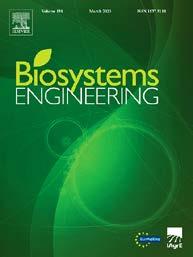
mechanical timing and quantity, relying on a fixed amount of feed preset by the breeder, which does not take into account the dynamic feeding needs of the fish. Problems of underfeeding or overfeeding may occur, affecting the growth rate of the fish and polluting the aquaculture water. Machine vision is an efficient, economical, non-destructive, and objective detection and analysis technology, which is of great significance in promoting the automation and intelligence of aquaculture. Therefore, the combination of machine vision and fish feeding demand for feeding is helpful to improve efficiency and achieve intelligent aquaculture. The main factors affecting feeding are introduced, followed by a general description of the process of intelligent fish feeding based on machine vision, and a detailed overview and analysis of the key technologies involved in image acquisition, image processing and analysis, and intelligent fish feeding. It also discusses the challenges and potential solutions in intelligent feeding. In short, it aims to help researchers and industry practitioners to better understand the state of the art of machine vision in intelligent fish feeding, and to assist in promoting accurate feeding and improving the efficiency of aquaculture.
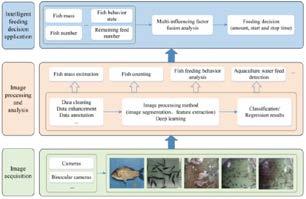
13 Landwards Autumn 2023
Landwards Conference 2023
Agricultural engineering - feeding the future

There is no denying climate change is having a catastrophic effect around the world and we must change how we live, both now and in the future. It is essential that agriculture plays its part in the latter, but additionally sets itself up for the challenges ahead of feeding a growing population. With just under 8 billion on our planet, another 0.5 billion by the end of the decade and just under 10 billion by 2050, the task is significant.
Date: Wednesday 1st November 2023 - online
14 Landwards Autumn 2023
Preview
Agriculture is of course the ability to enable the few to feed the many, but the resources to do so are ever reducing. In Europe, the land available for agricultural production continues to reduce, so how do we get more from less? Importing and exporting have their own challenges such as their carbon footprint and the public’s awareness of food-miles. Irrespective of peoples eating habits, we need to eat, so we need agriculture, and of course we need science and engineering to make it happen.
As King Charles has recently said “Engineers must save this planet from increasing catastrophe”, a true statement; so what is engineering, science and technology doing to improve efficiency in food production, but in an environmentally sustainable way?
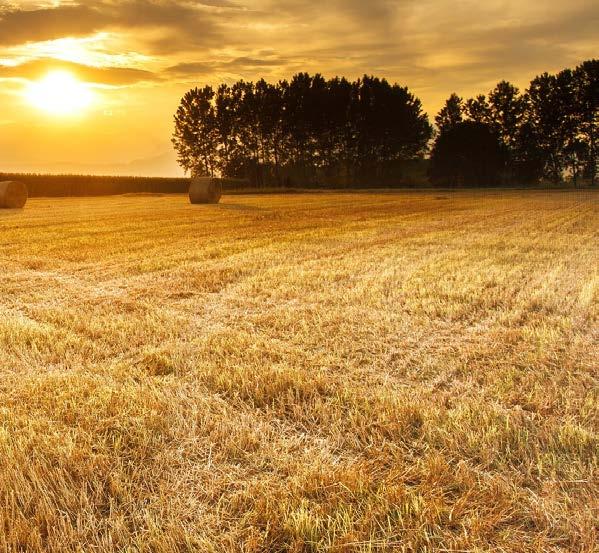
The Institutions conference will explore some very different areas, such as farming without soil, advances in on board crop nutrient measurement and technology the livestock sector has to offer. The presenters will take you through
some of the interesting advances in technology, giving a flavour of how the industry is rising to the challenges ahead.
The event culminates with a panel discussion where the speakers will answer questions from the audience and give delegates a chance to put views forward. The conference will be of interest to a broad spectrum of people, including students, academics, technologists and industry engineers as we explore the future of food production.
15 Landwards Autumn 2023
The land available for agricultural production continues to reduce, so how do we get more from less?
The Programme
On board harvester nutrient measurement technology
Will Downie - John Deere
Will is a Precision Ag Specialist at John Deere, who will be explaining the technology that delivers live data

to farmers throughout harvest to aid future planning to improve efficiency and output.
Exploring Global sustainability
Kirsty Pilcher – AGCO
Vertical Farming
Niels KortseeIntelligent Growth Solutions Ltd
Niels is the Head of Product Management and will be outlining the challenges, expertise required and future direction of this emerging technology.

Kirsty Anne Pilcher BSc (Hons) CEnv MIEMA is the Global Sustainability Manager - Decarbonisation at AGCO. She will be describing AGCO’s strategy for integrating sustainability into the design, manufacturing and distribution of smart agriculture across the entire value chain.
Kirsty has over 20 years’ experience working in the Environmental Management space in multinational companies’ across various industry sectors including construction, mining/quarrying, manufacturing, energy and transport, she is passionate about implementing sustainable practices into every part of our lives to drive to achieve a net-zero world.
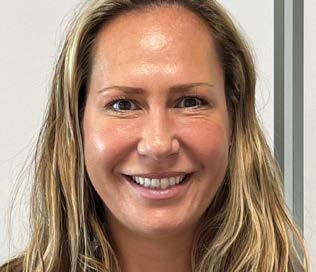
16 Landwards Autumn 2023
Kirsty Pilcher – AGCO
Niels Kortsee - Intelligent Growth Solutions Ltd
Will Downie - John Deere
Opportunities in robotic horticulture
Dr Toby Mottram FRAEng FIAgrE
The UK has a fresh vegetable crisis that is growing. Out of season vegetables are grown all over the globe, transport costs, trade disruption and a water deficit in growing areas such as Murcia in Spain are exacerbating this crisis. Supplies of salad vegetables in winter are provided through highly automated, heated greenhouse systems that have their own crisis due to high rise in energy prices.
Looking at soils, there is a need to rebuild soil carbon, reduce erosion and cut nitrogen use, and this requires fundamental changes in husbandry systems, but new innovations and safety concerns will require major equipment re-designs.
In the UK there is a shortage of seasonal labour. This may be temporary but there are longer term demographic and social changes that will make the shortages worse. This scenario creates a major opportunity for novel engineering. In this paper Dr Mottram will show and review some recent developments in robotics and horticultural systems. Are purpose built robots integrated with dedicated implements for the future or can tried and tested tractor and implement systems be adapted for autonomy?
Dr Mottram will look at data access and control and discuss whether plug and play systems can predominate despite the oligopoly of half a dozen tractor suppliers with in-house software.
One of the biggest challenges is business investors want companies that can scale millions of units to
global markets and yet the market for these highly specialised robotic fruit and vegetable harvesting machines are tiny and development costs are high.
Toby Mottram began his career as a farmworker in Devon and then retrained as an engineer, moving into research and teaching before going into digital agritechnology start ups. During his academic career he co-invented robotic milking, developed cow breath sampling, in-line milk analysis and the rumen telemetry bolus. He set up eCow in 2007 to commercialise rumen telemetry systems and sold it as a going concern in 2021.

He completed a BBSRC/Royal Society of Edinburgh Enterprise Fellowship in 2016 to develop Milkalyser and subsequently raised £1.6m to develop the prototype. Milkalyser was acquired by Lely the market leader in robotic milking in 2020.
Toby has now refocused on sustainable land management and peri-urban horticulture using robotics and sensing technologies. He owns Robot Hayes near Exeter which he is developing as a horticultural development and test centre with the UK’s first farmBot system working in a polytunnel.
The day will wrap up with a panel discussion involving all the speakers and there will be opportunity for all delegates to raise questions.
Book now
Head to https://iagre.org/conference-2023 to find out more about the conference and to book your ticket. Don’t forget this years conference is online to ensure everyone can take part.
17 Landwards Autumn 2023
Dr Toby Mottram FRAEng FIAgrE
Dr Mark Cooper
“My career path was not one that I would have predicted in my late teens.”
A reflection on practicalities and purpose
In a recent Landwards podcast, Dr Mark Cooper, fellow of the Institution was interviewed by the editor about his career and the impact of agricultural engineering. This is a summary.
I am Dr Mark Cooper, fellow of the Institution and a member for more than 40 years. I have ended up specialising in agricultural safety and agricultural machinery safety, in particular. I have taken an interest in investigating serious and fatal accidents at work, especially those involving wheeled off-road equipment.
Not expected
My career path was not one that I would have predicted when I was in my late teens, but I read agriculture
engineering at Newcastle University and then went and worked for the Ministry of Agriculture, Fisheries and Food within ADAS looking at agricultural mechanisation. I was never cut out to be a Civil Servant, but enjoyed immensely my time with ADAS. It did help me in any number of useful ways. I then continued my education and ended up working for one of the industrial training boards.
This was at a time when heavy machinery was still being manufactured in this country.
So we had to supervise apprenticeships typically fitting, turning, milling, toolmaking. All these trades are not as prominent as they used to be.
Then I had an opportunity to work alongside the health and safety unit at Aston University, and that was the start of my academic career.
At that time, the Health and Safety Executive had a specialist agricultural Inspectorate and Aston University were training new recruits to HSE, but they didn’t have anybody in

18 Landwards Autumn 2023
People
the staff who had some agricultural knowledge.
I joined the staff as a Teaching Fellow, principally as a specialist on vehicle stability and vehicle safety. That was 30 years ago, and it started my career, which bridges agriculture, engineering and occupational health and safety. And that is sort of where I found myself as my work area.
Practical pointers:
I think one of the greatest challenges that engineers face is report writing. They’re usually very good at analytical work calculations. Drawings & numbers are all important to engineers. The skills gap is the idea that writing reports is challenging. From my experience people are good engineers and don’t necessarily make good report writers And the ability to present an argument and to sustain it through a quite long document is a skill that must be worked upon and acquired. Some people get the opportunity when writing a dissertation. That’s a good starting point. It’s a very real challenge that engineers need to persuade people. Having a good command of English gives you just
the right word. Report writing is a skill that I think is sadly being lost.
Why does what you do matter?
Andy will remember very well. The case we did together of a rather well-off gentleman in the Home Counties, who bought a compact tractor, and it came fitted with a particularly heavy and inappropriate front-end loader.
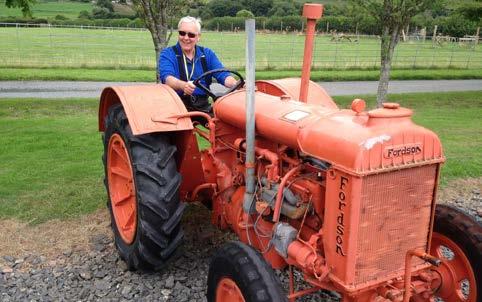
What happened was that his tractor slid out of control downhill and overturned. Sadly, he received life changing injuries.
When I looked at this accident as an agricultural engineer, I understood what that happened. That was a control loss of which the research from Scottish Institute of Agricultural Engineering was very clear.
When we explained to him how his accident had happened it was the first occasion anyone had been able to provide him with an answer why the vehicle overturned.
So that understanding of the technicalities helped in a small
way for the victim of an agricultural accident to have some closure on the causes of the accident that gave him a permanent disability.
I believe that sort of understanding has a human aspect, helping people to come to terms with what has happened to them, and furthermore to prevent similar incidents in the future. Hear
Head to the Institutions website and listen to Marks interview in full.
https://iagre.org/podcasts

19 Landwards Autumn 2023
the full interview
Dr Mark Cooper
People
Engineering Society round up
LAMMA 2023
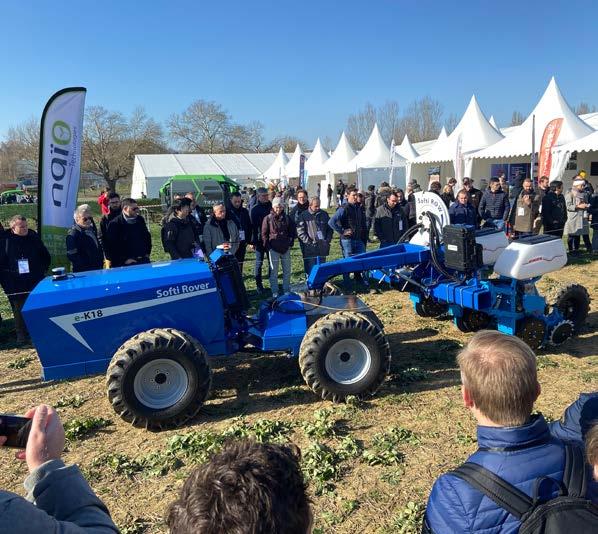
The Engineering Society took a minibus of students to LAMMA at the NEC in January. For some it was a day of exploring the newest machines to the market, for others an opportunity to network, with multiple students seeking placements and graduate roles with the companies present at the event. Lecturers also can also attend the Society’s events and trips and the LAMMA event provided the transport for all interested parties.

20 Landwards Autumn 2023
Rhodri Williams, M.Eng student reflects on Harper Adams University Engineering Societies activities from the last year.
World FIRA 2023 – the agri robotics forum
In February, the Engineering Society provided the opportunity for 15 students to attend the World FIRA 2023 event in Toulouse, France. Predominantly made up of Engineers of all years, a small number of Agriculture students attended too. The FIRA exhibition is designed to showcase latest technologies, network between educational and industrial companies, and building relationships for future developments within the industry.
Both days were spent at the FIRA exhibition, with the 2nd afternoon
spent at the Airbus Museum at the Toulouse Airport prior to the return flight to the UK.
Key take homes for the students included:
• Experiencing the latest technology used in all applications from sensing equipment to mapping software allowing data sharing between machines.
• Speaking to manufacturers about future projects and relationships with their companies.
IMechE Hydrogen Conference
In March, 7 students attended the IMechE Hydrogen Conference in London held at the Tottenham Hotspur Stadium. With the focus of “Engineering Challenges in the Hydrogen Economy 2023”, the event was a platform for engineers to discuss challenges, strategies and demonstrate the future for the use of hydrogen and other similar applications.

The attending students had the
privilege of being exposed to industrial speakers, with knowledge on the subject, along with research being delivered throughout the event on the progress of hydrogen and its opportunities.
Students were thankful for the event, and the Engineering Society provided transport and accommodation for the 7 students at a subsidised cost. “Without knowing about the event, I would
• Seeing the live demonstrations of different machines being used to sow, cultivate, survey and harvest crops from individual plants to tree crops.
• Exploring a French city, having never left the United Kingdom before this trip!
Funding came from our main sponsors, as well as a substantial travel cost from the Douglas Bomford Trust which allowed students to afford the visit. Thank you on behalf of all who attended!
not have attended, however it was of great interest to me and the group funding was a substantial help in allowing me to go and improve my knowledge of the subject” said one of the first year engineers. The Society looks to attend more events of a similar type in the coming years, providing extra knowledge on specific areas within the industry, and provide the networking opportunities between students and industrial partners.
In summary
On behalf of the Engineering Society, a massive thank you to the sponsors for the year, companies who have hosted, and individuals who have supported where they can from Harper Adams Staff to individuals within the industry. The Societies members look forward to another busy academic year, with plans for more interesting events in the UK and abroad already underway. Thank you all!
21 Landwards Autumn 2023
Practice
Rural roads
Promoting synergies between rural roads and agriculture in developing countries
The rural roads and agriculture sectors are both vital support components for community well-being in developing countries. There are natural synergies to be utilised to the benefit of both sectors. However, compartmentalised government responsibilities and commercial interests usually fail to generate benefit from these potential advantages. Robert Petts MIAgrE kindly submitted this report.
One approach that has been promoted in several countries is the use of agricultural tractors.

From the agricultural sector perspective there have been many initiatives to introduce mechanisation to replace animal use
and human labour (Sims & Kienzle, 2018). However, variable seasonal utilisation means that these investments often fail to generate economic payback, with the local very high rates of commercial credit interest (often more than 30% per annum, even if available) and
utilisation often much less than 500 hours per year (Hancox and Petts, 1999).
All-season road-based transport is a vital enabler for rural development, social and economic activities and community well-being, particularly for
22 Landwards Autumn 2023
vulnerable groups (women, children) (Cook et al, 2017), including encouragement of local enterprises. Currently the majority of the rural road networks in Sub-Saharan Africa (SSA) are unpaved (constructed to earth or gravel standard) and as such require regular maintenance input, particularly to camber and drainage to retain acceptable levels of service and access. However, unpaved road network maintenance is generally substantially under-funded in the region.
There is a clear demand, therefore, for innovative, cost-saving approaches to maintenance activities for the unpaved road network, that is less dependent on imported technologies. Currently routine maintenance of unsealed roads is usually based around the use of imported motorised graders which
are very expensive to procure and operate in the prevailing high-finance-cost, problematic support environment. They are also over-powered for the routine.
The case for tractors
Typically, 100hp (75kW) power units are required for heavy reshaping grading and 70hp (52kW) units are sufficient for routine minor camber reshaping. This size of agricultural tractor is increasingly available in rural areas and the support, servicing and spares are far more accessible and affordable than for heavy civil engineering equipment.
Within appropriate road environments, agricultural tractor-based technology is a proven lower-cost alternative to the use of high-cost specialist plant for low volume unsealed road maintenance. These techniques have been proven and demonstrated to be cost-effective in Kenya, Mozambique, South Africa, Zambia and Zimbabwe (Petts, 2020).
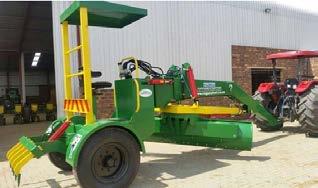

One machine – many tasks
Furthermore, the proven multi-application potential of the agricultural tractor across the various sectors (Table 1) offers great potential for raising equipment utilisation and substantially reducing capital and operating costs. Most of the necessary tractor attachments are possible to fabricate with local developing country mechanical expertise and facilities; further benefiting local enterprises and sustainability.
23 Landwards Autumn 2023
2 tonne light towed grader and 52 kW agricultural tractor, suitable for light grading
Fig 1 - 5 Tonne heavy towed grader and 75kW agricultural tractor, suitable for heavy and light grading.
SECTOR OPERATIONS
AGRICULTURE
Ploughing, Harrowing, Rotovating, Sub-soiling, Haulage, Access Road Construction/Maintenance, Land clearance and levelling, Root removal, Planting, Seed Drilling, Fertiliser Application, Pesticide/Herbicide Application, Harvesting, Loading, Pond Construction, Dam Construction, Borehole Construction, Contour drains, Fencing (post hole boring)
FORESTRY
ROADS (paved and unpaved)
Winching, Loading, Hauling, Poling, Sawing, Access Roads

Gravel Haulage, Water Collection Haulage and Distribution, Personnel Transport, Bridge & Culvert Materials Haulage, Fuel Haulage, Plant Haulage (low loader trailer or semi-trailer), Towed Grading (heavy and light), Dragging, Towed Compaction (rubber tyred/steel roller), Earthworks
Excavation & Haulage (towed scraper), Excavation (back hoe/ripper/scarifier/ compressor & pneumatic tools), Loading (front shovel), Grass & Bush Control, Spreading Materials, Bitumen Sealing (towed bitumen/emulsion heater/sprayer), Stone crushing (towed crusher and screens), Chippings Transport, Recycling pavement (milling attachment), Brushing/Sweeping, Mixing (disc harrow), Slurry Sealing (mixer and spreader), Premix Patching Material Production, Temporary Accommodation (towed caravan/workshop)
AGRO-PROCESSORS
MUNICIPAL (non-road)
WATER SECTOR (non-road)
BUILDING CONTRACTORS
MINING/QUARRYING
TRANSPORTERS
PLANT HIRE COMPANIES
RESEARCH/ACADEMIC/ TECHNICAL INSTITUTIONS
NGOs
Source: Petts, 2012
Threshing, Hulling, Milling, Haulage
Garbage Skips, Water Haulage, Night Soil Disposal
Pipeline Excavation, Pipe Laying, Cranage, Loading, Earth Dam Construction, Irrigation Channel Construction, Water Pumping, Water Haulage, Borehole Drilling
Materials Haulage, Excavation (back hoe/ripper/scarifier/compressor & pneumatic tools), Loading (front shovel)
Stone Crushing (from PTO), Loading, Access Roads, Materials Haulage
Loading, Short Haulage: Goods, Materials & Personnel
Hire to Others for all the applications in this table
Demonstration
Training
Any of the above operations
24 Landwards Autumn 2023
Table 1
Potential Agricultural Tractor Applications in the Rural Economy
The cost of money
In a severely constrained resource environment such as Sub-Saharan Africa, the finance/opportunity cost of capital is a particularly influential factor. The high rates of interest suggest a capital minimisation strategy should be most appropriate. Many road authorities are not renowned for
About the Author
their regular and realistic costing of operations in an environment of high credit costs, foreign exchange fluctuations and limited resources. In consequence, the benefits of tractor technology innovation are not readily apparent.
A 2017 Zambian project equipment economic analysis (Petts, Gongera & Petts, Oct 2018) found that at all rates of interest considered (15%,
25% and 35% p.a.) and annual utilisation rates (500 and 1,000 hours) the tractor technology options are about 50% or less in financial cost than the heavy equipment option. Carbon footprint characteristics are similarly reduced.
New initiatives are required to create greater awareness of the benefits of cross sector, rural agricultural tractor applications.
Robert Petts has more than 50 years of professional experience working in over 40 African, Middle Eastern, Asian, Pacific and European countries, of which 42 years have been involved with developing countries and transport infrastructure for inter-urban routes and rural communities. Most of Rob’s assignments in this period have been on the research, development and dissemination of appropriate technology roadworks and infrastructure, and intermediate technology equipment to support local resource-based roadworks. He has been involved with the development of systems, technologies and techniques appropriate for a range of limited resource environments; making best use of local resources such as labour, local materials, locally made equipment and local enterprises.

The author would be very happy to hear from Members who are able to ‘spread the news’ and promote this low cost and more sustainable approach to road maintenance, agriculture and rural development.
For more info please contact rob@intech-associates.co.uk
References
Cook, Petts, Visser & Yiu (2017), The Contribution of Rural Transport to achieve the Sustainable Development Goals’ for SLoCaT and DFID.
Hancox W. and Petts R (1999), Guidelines for the development of Small Scale Tractor-based Enterprises in the Rural and Transport Sectors, for DFID.
Petts R. (2012), Handbook of Intermediate Equipment for Road Works in Emerging Economies. Petts, Gongera & Petts, (2018), Establishment of Tractor-based road works Demonstration-Training Unit in Zambia. Equipment Evaluation Report.
Petts R. (2020), Agriculture and rural roads – synergies and opportunities, Bulletin article for the Tropical Agriculture Association.
Sims & Kienzle (2018), Rural Mechanisation: where are we now, and where should we be going? For Tropical Agriculture Association.
25 Landwards Autumn 2023
New guidance out BSI plus SIG
New guidance launches to support safe and secure use of crop robots in farming

A code of practice designed to support the safer use of tools that can help farmers operate more sustainably, address labour shortages and respond to global demand for more intensive crop management has been published by BSI.
The guidance on autonomous mobile machinery (AMM), including crop robots in agriculture and horticulture, has been developed to enable farmers, horticulturists, government agencies, autonomous
mobile machinery manufacturers, importers and distributors and other users to take advantage of available technology. Since the World Resources Institute estimates that farmers will need
to produce around 60% more food by 2050 to serve the world’s growing population, having access to these tools could be crucial to help them improve sustainable food production and meet rising demand.
“Using
26 Landwards Autumn 2023
Practice
IT including accelerate progress
training for safe operation and maintenance of AMM and advice on farm planning, including hazard controls and emergency preparedness.
This follows a global drive towards uptake of AMM in agriculture and horticulture to support labour shortages and a need for more intensive crop management. In February this year, the UK Government pledged £168m in funding to help encourage the development of new technology and innovative ways of farming, with a focus on practical solutions that advance food productivity and deliver significant environmental and animal welfare benefits, including robotic technology.
including robotics has the potential to progress towards a sustainable world.”
Use of autonomous mobile machinery in agriculture and horticulture – Code of practice (BS 8646:2023) provides guidance around the safety and risk management processes that can be applied to farming operations, information on instructions and
Despite the benefits, use of AMM can also present risks, especially when integrated with staffed farm operations. This new standard provides best practice guidance on their introduction and safer use, whilst encouraging wider adoption of AMM, particularly in smaller enterprises.
As set out in BSI’s recent white paper on Smart Farming, with agriculture contributing an estimated 19-21% of global carbon emissions, technology can address many pressing challenges. For example, data analytics solutions, such as
Who developed the code of practice
sensing the moisture level of soil, could increase crop precision and accuracy, while robotics technology is already being used to take on tasks like fruit picking.
Smart farming

Sebastiaan Van Dort, Associate Director, Sustainability & Energy at BSI said: “Smart farming can bring huge benefits to society, including more economic production of crops, sustainable production and greater food security, as well as helping the agriculture sector to meet Net Zero targets. However, owners and operators of AMM also need to feel sure that the introduced technology is used safely.
“Using IT including robotics has the potential to accelerate progress towards a sustainable world while delivering higher, more profitable growth and improved food quality. This new code of practice can facilitate the development of the AMM manufacturing sector, helping to protect the future of farming and benefit us all.”
BS 8646:2023 also clarifies roles and responsibilities of owners and operators, designers and manufacturers and importers and distributors to reduce uncertainties.
27 Landwards Autumn 2023
This new standard provides best practice guidance on autonomous mobile machinery introduction and safer use
The committee included representatives of Harper Adams University, JCB, The Ramblers Association, Innovate UK, John Deere, Agriculture and Horticulture Development Board, AEA - Agricultural Engineers Association, HSE - Health and Safety Executive, Small Robot Company, Institution of Agricultural Engineers, University of Lincoln and the National Farmers’ Union.
Clive Blacker
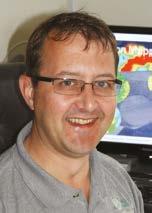
Archaeology, farming and technology, really?
Farmers are archaeologists on a different scale, as farming methods have been passed down generations and approaches are often based on the way things have always been done. Precision farming specialist and Douglas Bomford Trust trustee Clive Blacker takes the long view with the technology.
Farm management measurements are typically relevant for previous crop, with learning from this applied to predict the future. Past management and history play an important role in the management of and resulting crop performance of crops. At times history shows itself in the land. Often it’s not until this previous management can be fully identified that a real understanding of variability, and hence management can occur.
Technology advances with precision farming are allowing farmers to manage inputs more efficiently and addressing environment issues. At the same time the automation of machine control combined with autosteer are allowing single operators to be able to control much
larger machines more accurately with less overlaps increasing output efficiency and the precision of applications.
Bigger equals less precision?
Whilst these advancements have become mainstream, there are arguments that precision farming is becoming less precise. The biggest impact from these changes are labour reduction and the use of higher output equipment. This has enabled more area to be covered with a reduction in inputs.
This mechanisation is causing a reduction in the levels of precision, data, and control of applications at scale. The technology for more efficient and accurate yield mapping

28 Landwards Autumn 2023
Opinion
“On my own farm I collect 60% less yield data points per Ha as the combine is so much bigger than the earlier machines.”
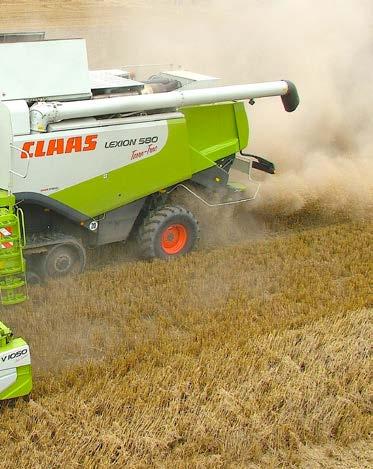
or fertiliser applications has not kept up with the resolution as say machine control, reduced resolution in the process.
Harvesters today are twice the working width, and twice as efficient allowing them to travel larger areas faster. As a result the single yield monitor on the combine harvester is collecting less data per ha and more grain than its smaller older ancestors. Today on my own farm 60% less yield data points are collected per ha, as today’s combine harvester is so much bigger than the earlier machines when we first started yield mapping. While there are significant output and efficiency benefits it’s at the cost of higher resolution data. 20 years ago, that yield data was based on a 6m header, not a 10m + header as today.
Resolution is the biggest killer to the quality of data that’s captured and used on farm today as low-resolution machines cannot return the investment of more accurate data capture. However, agriculture is seeing an emerging transformation to higher resolution technology, with companies aspiring to bring per plant applications to reality, with autonomous robotic machines, at a much smaller scale and therefore higher resolution, with swarms of these smaller machines operating across large areas, 24 hours a day.
Archaeology
Why then in archaeological terms is this important? Given the scale of current machines and the data
collection limitations associated with these, farmers don’t recognise the issue. As this ‘missing’ data is not available to build a high-resolution business case.
Therefore, there is no requirement for a high resolution of data as if it were today’s “precision farming” activities could not handle it, and the vision for the future has some way to go to justify the investments needed for high resolution mapping.
Collecting data points to match application equipment today is aimed at working widths of between 12 - 36 meters. The scales that a farmer is looking to measure are therefore currently in tonnes per ha, or sample per ha rather than the grams per m2
Farmers may have very accurate equipment from a positioning perspective. But the bigger machines produce less data that cannot inform the small previous management or land use from an archaeological perspective.
Archaeologists on the other hand collect high resolution data that is very dense to show small changes or activities that have occurred within different land occupations over many years. They are not just interested in the surface, but a typical survey will be 3 dimensional and will investigate detail to some depth over hundreds of years.
The ability for example to identify a post hole from current yield mapping data is impossible, even if the post hole can be seen in high resolution drone images captured within the growing crop. That’s a real data mismatch.
Archaeological investigations are done over considerable detail and time, logging many features that are not even on a farmer’s radar in resolutions as they don’t currently have, or the tools to deal with that level of detail. Agriculture is most certainly the poor data cousin of archaeology.
Food for thought!
29 Landwards Autumn 2023
Historically calculating nitrogen use efficiency has been limited to a whole field approach because whilst yield and nitrogen use can mapped, grain protein has not been previously available.
Protein mapping via John Deere’s Harvest Lab system now changes this and presents a protein map for the field. Whilst the protein levels are interesting to see and will help with segregation and marketing, it also enables the calculation of nitrogen use efficiency. All that is needed is total nitrogen use and SNS and the efficiency can easily be calculated.
Taking the average yield or 9.3 tonnes/ha, an average protein level
Nitrogen use efficiency
of 12.8% and a total nitrogen use and SNS of 235 kg/ha, the field nitrogen use efficiency is 65.4%. But the more interesting thing to do is to create a nitrogen use efficiency map for the field, showing the spatial variation of efficiency throughout the field.
This now opens a whole new area of insight into the field’s performance. We can use this for targeting more in-depth soil inspection and analysis, as well as targeted monitoring and changing the management approach of following crops.
The real power of this data will be to start to combine this with other data, such as soil information,

satellite imagery and other field trends. Being able to create application plans based on the yield potential and the long-term nitrogen use efficiency of every soil zone on the farm could improve farm productivity, with higher yield and quality using less nitrogen fertiliser.
If the protein map is looked at in isolation, then it has limited use, however, if this data is combined with other relevant datasets and agronomic know how, this can provide something that has significant value to the grower.
30 Landwards Autumn 2023
Technical
John Deere Operations centre screenshot showing the yield map on the left and the protein file on the right
Ever since application rates for arable crop inputs, ie seed, fertiliser and ag chem could be adjusted on the go, the question has been, “but at what rate?” This article looks at some of the current thinking.
Combine protein mapping
John Deere proven Harvest Lab technology is now available on their combines and provides a range of real-time data including moisture, protein content in wheat, barley and oilseeds, starch content in barley and oil content in oilseed rape.
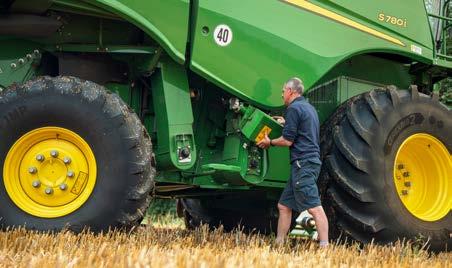
Will Downie from John Deere will be presenting at the Institutions Landwards Conference on 1st November, see preview on p14 or https://iagre.org/conference-2023 for more information.
Do it yourself?
At a seminar at the Cereals Event Mechteld Blake-Kalff from Hill Court Farm Research, suggested farmers might be better off experimenting with fertiliser rates on their own farms rather than relying on industry norms:

“The problem with RB209 is that it is all based on averages, and your farm is not that average farm.
“Having said that, it is better to use it than just relying on what you have done before”.
Cutting nitrogen rates posed the risk of leaving the crop short of nutrients, particularly in dry conditions where
mineralization rates might not be as high as anticipated. On-farm experiments could produce some valuable, farm-specific data, she suggested, but should ‘start small’ and be expanded as progress was made:
“On one tramline apply the farm standard application of fertiliser and the next one try a different level and see how you get on”. She expects most farmers could improve their nitrogen use efficiency (NUE) by 10% - 20%.
Thanks to Oliver Wood from Hutchinson’s for input with this article.
31 Landwards Autumn 2023
Mechteld Blake-Kalff - Hill Court Farm Research
Membership Matters
East Midlands Branch
June visit to The Lincoln Institute of Agri Food Technology at the University of Lincoln
Report by Chris Cunnington
Following a talk on the history of LIAT (The Lincoln Institute of Agri Food Technology) by Professor Simon Pearson, the Founding Director of LIAT, we were taken on a guided tour around the campus to see and learn about the latest research into robotic work with fruit & vegetables.
The tour started with a look at the work of one of the start-up
businesses operating from the campus, LIAT offers business support through mentors and funding to start-ups that specialise in agri technology. The company was developing a ruggedized hand held device which incorporated a high resolution 3D camera and powerful GPU processing unit. The device was designed to scan a crop, in this case fruit such as strawberries and identify if it was ready for picking/harvesting. The high powered GPU enables high speed on device processing of the very large amounts of data produced by the 3D camera, the processed results data set now being only a few
megabytes is then small enough to be transmitted quickly over a data network to a centralised system where it can be further analysed. The scanning device was capable of many 10’s of thousands of samples a day where as a human carrying out the same task was capable of accurately checking up to 150 samples in a day.
After identifying when the crop was ready to be harvested, the next stage was to be able to consistently pick it. We were shown examples of the issues robotic devices have handling various plants and particularly fruit based item, a conventional ‘gripper’ used by a robotic device is

32 Landwards Autumn 2023
usually made from hard materials and once positioned doesn’t work very well, not being soft enough or repositioning to compensate for the irregular shape and size of natural objects. Not great when trying to pick soft fruits such as strawberries and blackberries! The solution was twofold, the first problem with fruit is that a vision based positioning system wasn’t going to be reliable as the fruit could be partially obscured by leaves, the solution was a sensing system using a long soft silicon like whisker that acts as a probe, soft enough not to damage the fruit and with a sensitive force gauge to detect deflection of the probing whisker, this provided suitably accurate positioning of the robotic picking arm. With the robotic arm now roughly positioned the gripper needs to be soft enough to not damage the fruit, yet hold it firm enough to be able to pull it from the stalk, whilst also catering for the potential variations in shape and size. The prototype gripper design that was proving most successful was made from a cylinder of a silicon based sheet material which contained air passages and had a 3D laser printed base. This gripper when slid over the fruit was then inflated with air until a predetermined pressure was reached, at this point the fruit was held securely enough to pull from the stalk, but, was still soft enough to not damage the fruit. There were also alternative gripper designs on display for larger, less delicate items, these moulded themselves around the object to be picked up. They were made from a more solid silicon material containing lots of webbed pockets, this meant as the gripper closed on an item it deformed to its shape.
With robots and autonomous vehicles capturing and producing very large amounts of data, the issue of being able to reliably transmit this data and ensure timely processing in the cloud or on premise, rather than on the vehicle was identified. The public 5G network wasn’t good enough, due to coverage and being able to guarantee the bandwidth requirements needed to provide the required level of service, particularly where safety was concerned. The solution was
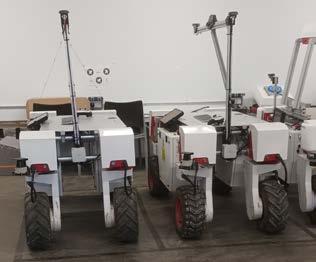
their own 5G base station in the campus grounds, run in partnership with BT, and which is one of only 2 in the country, and it’s complete with its own set of edge servers for data processing. The autonomous software used by LIAT is made available under an Open Source license, for anyone to use for free, and all of LIAT’s projects are built using the same robotic/ automation modules, thus providing a standardised and consistent interface across the many different robotic vehicles we came across during our visit.
A surprise, was a complete Tesco Local store, setup in one building. This was used for a project that used AI to monitor the freezers within the store and switch them on and off based on the dynamic pricing of electricity throughout the day. So at times of high demand on the national grid when energy prices are high, the system would turn off various units and back on again when demand dropped and energy prices reduced. The AI system learned about the heat cycling of the various freezer units and their contents to be able to accurately predict and control the switching. Initially this research project although providing good results, wasn’t considered great enough to provide the ROI needed, but with the recent changes in energy prices unsurprisingly it’s suddenly
become of interest again.
We were shown a strawberry crop where the grey mould that normally occurs on the plants is totally controlled and killed off by robots administering UV-C light. The high UV-C light energy required is dangerous for humans and must also be applied during dark hours to be effective, so robots work up and down the rows between 10pm and 2am unmonitored, applying the UV-C light.
And finally we were shown what initially appeared to be a slightly larger than normal wonky greenhouse, it was though, deliberately designed and built like this. The distorted shape was calculated by software that takes into account the location and orientation of the greenhouse relative to the sun, by distorting the curves used to produce what would normally be perfect semi-circular roof sections, the light can be optimally focused in the greenhouse. Used for hanging crops such as tomatoes, where the same light levels need to reach the lower fruit as well as those at the very top of the plant, it improves the consistency of ripening and yield.
All in all, an excellent very informative evening that generated a lot of questions and discussion among the group.
33 Landwards Autumn 2023
Membership Matters
Northern Ireland Branch Farm and forestry contracting in Ireland
Report by Terence Chambers.
Credit image: Farming Photography
The Northern Ireland Branch members of IAgrE recently enjoyed a presentation on the subject of “Farm Contracting in Ireland” by Michael Moroney, Chief Executive Officer of FCI (the Association of Farm and Forestry Contractors in Ireland). Mr Moroney is well known to the Branch from his time as machinery editor of the Irish Farmers Journal and through his subsequent roles leading to his present position. He has been a strong advocate and supporter, throughout his career, of an effective organised farm and forestry contract service sector in Ireland.
His presentation began with an overview of contract services and went on to describe the current issues being monitored and dealt with by FCI.
There are around 15,000 contractors in Ireland employing about 10,000 full-time, plus a similar number of part-time, people. The average annual cost for their services across 137,000 farms is 5,682 Euros / farm. Around 3,000 farm/farm contractor interactions take place during each working day. Grass silage harvesting, using more than 400 specialist high-capacity self-propelled forage harvester teams across the country, is an example of one of the popular services provided to Irish farms.
FCI members have recently been critical of the fact that only farmers
are eligible for grant aid support in Ireland (under the current Targeted Agricultural Modernisation Scheme TAMS) for the purchase of farm machinery. They point out that equipment can be purchased to take advantage of grant payment even if the basic investment could not otherwise be economically justified for the size of the farms involved. They see this as unfair competition against contract businesses who should be recognised for already providing a cost-effective country-wide service.
Part of the cost of green farm diesel fuel consists of a carbon tax. It was originally set at 41.3 Euros /1,000 litres but by May 2022 had risen to 111.14 Euros. Farmers can claim a tax reduction on the difference but contractors are still not eligible to directly do so.

34 Landwards Autumn 2023
The forestry sector
Forest based contractors are mainly involved in tree planting and felling of mature trees on fixed price contracts. Most felling is now carried out using specialist self-propelled harvesters which can operate on steep inclines. They carry a precision cutting head which is programmed to cross cut to pre-determined lengths ready for transport forwarders to collect and stack them for subsequent collection by road transport.
Running the businesses
An industry which uses high capacity equipment in both farm and forest work directly faces all the recent price increases for tractors / machinery, parts and fuel
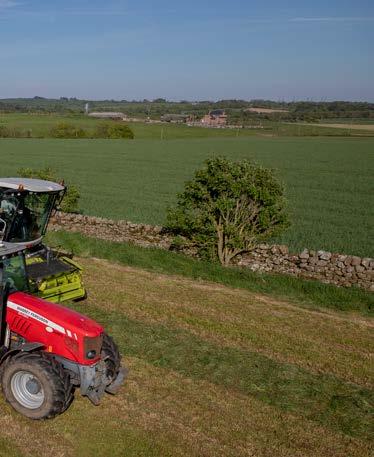
supplies. Examples include the cost of around 8,000 Euros for a quality replacement set of tyres to fit a 150hp tractor. FCI now has its own index linked IT app which enables individual members to input their actual fixed and running costs (via their cellphone or PC) to check that their business is still profitable. The figures show that the typical overall cost of operating a 100hp tractor is 50 Euros / hour. As well as often having a vital role in recording the work done and assembling the resultant bills for customers, the overview from other family members is important in ensuring that all relevant, long and short term costs are included.
Work force issues
There is a need to recruit and train more young employee entrants
in Ireland. Similar skills are also in demand from competitors like the construction industry. Other pressures include young drivers taking up seasonal employment as far away as New Zealand. Young people from rural areas seeking employment now tend to also consider wider options beyond local work in the farming sector.
An efficient contract service works on a pre-planned basis rather than being expected to respond to late requests in a “fire brigade” manner.
The future
FCI would favour an independently audited national register for farm and forestry contractors to recognize their high standards of service and continuing professional development.
Developing national policy on topics such as nitrates management and carbon retention will increasingly require trained, skilled people to implement and record the processes. Contractors have taken the lead in the operation of lower emission slurry spreading such as dribble bar and trailing shoe systems.
Contractors often now get directly involved in implementing the terms of official indemnity letters to farmers on some of these operations.
Following an extensive question and answer session, IAgrE Branch Chairman Peter Verhoeven thanked Mr Moroney for providing such an insight into the industry by his most enjoyable and informative presentation.
Note this is an edited summary, the full report is available here
https://iagre.org/northern-ireland-branch-reports
35 Landwards Autumn 2023
Membership Matters
Western Branch
Presidents address and career
Report by Rupert Caplat
Wiltshire College, Lackham was again the venue for the Branch AGM where current IAgrE President, Steve Constable, kindly travelled from his home in Lincolnshire to present both his President’s Address and a summary of his career at Spaldings Ltd.
Steve is not a Lincolnshire lad but grew up many miles away on Exmoor. Leaving school with one CSE in Metalwork he worked on farms and serviced generators for five years before enrolling at Cannington College near Bridgwater to study an ND in Agriculture. After his ND he then planned to enrol at Lackham to study Agricultural Engineering but with no maths qualification he was initially turned down but got a second chance by agreeing to study extra maths on a Wednesday afternoon. This was not a problem as he was not a sportsman.
Theory into practice
He spent his sandwich year at machinery dealer Tuckett Brothers in Aylesbury where he was able to put the theory into practice and gain valuable practical experience. This wasn’t the end of his academic training though as he then enrolled on the HND Agricultural Engineering course at Harper Adams where he saw his future in management. This led to his first role at Spaldings as an Assistant Product Development Manager in 1991.
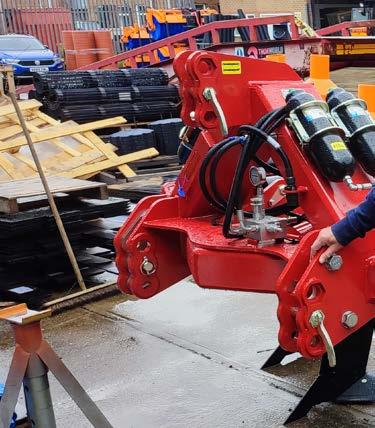
Spaldings was founded in 1956 by Earnest & Godfrey Spalding in Lincoln. Their father, Albert, was a blacksmith and coffin maker who travelled around Lincolnshire selling
his wares to local farmers. Initially manufacturing simple wood turned items such as scythes and hoes, the business was bought by a group of local farmers in the 1960’s with a view to expanding the range of products. First they expanded to Yorkshire and then UK wide. Best known as suppliers of cultivation equipment, the company continued to grow through the next decades with acquisitions of businesses in mainland Europe and expanding into the Groundcare machinery industry.
Steve could see his future was bright with the company so studied an MBA which initially had to be self-funded as the company wouldn’t pay for it. However, once completed, the company had a change of heart and could see the advantage of having a qualified manager on the payroll so fully re-imbursed his course fees.
At that time there was not an effective quality system operating so Steve introduced one to include hardness testing of cultivation parts as well as a full drawing library. Analysis of worn cultivation points would result in changes to the design to put tungsten hardening where it was required but also where it wasn’t required improved the lifetime with minimum on-cost. In some cases Spalding sourced pattern parts were of better quality than the original OEM parts. He was also instrumental in introducing the quality management system in line with BS5750 principles since replaced by ISO9001. This gave an advantage over the competition and leverage over suppliers in raising the overall quality of the products. Always customer led, the company used customers to advise them on product design and development.
36 Landwards Autumn 2023
3D scanning and printing was first trialled in 2010 to provide suppliers with drawings and samples to manufacture. The company would specify the materials and procure the tooling plus field trial the samples to ensure their service life. Min Till is considered a threat to the business for the obvious reduction in the amount of wear metal end users would require.
Purchasing Manager was Steve’s next promotion. With 55 staff reporting to him via a small team of managers, one of the changes he implemented was rationalising the 670 suppliers down to around 500. After analysis of the improvements in the distribution industry the logistics fleet of vans and lorries were sold in favour of using third party carriers for both inbound and outbound deliveries. This was
considered an improvement in the overall service for the customer. The company also had acquired a dealer in Denmark with companies also in both France and Ireland. At this point the company was turning over £45-50million per year.
The above-mentioned expansion into Groundcare machinery in 1993 had a benefit not only in turnover but also to stabilise the level of business during the year. The agricultural industry, being very seasonal, saw peaks and troughs in the order input level throughout the year so branching out into other industries served to smooth out the dips in trade previously seen.
By 2004 Steve was on the Board as Purchasing Director and the company had 147 employees. In 2012 the company was bought
by the Marubeni Corporation of which Kubota and Agrovista are also members of. This gave the company even more purchasing clout along with the financial stability being part of a large group brings. It also allowed them to become dealers for major manufacturers such as Stihl, Husqvarna and Honda. In 2019 the company moved into construction machinery with help and guidance from Komatsu.
Steve became Managing Director of Spalding’s in 2019 but left in June 2022 and took over the mantle of IAgrE President in the same year.
The thanks of the members of the Western Branch committee go to Steve for his time and support of Branch events.
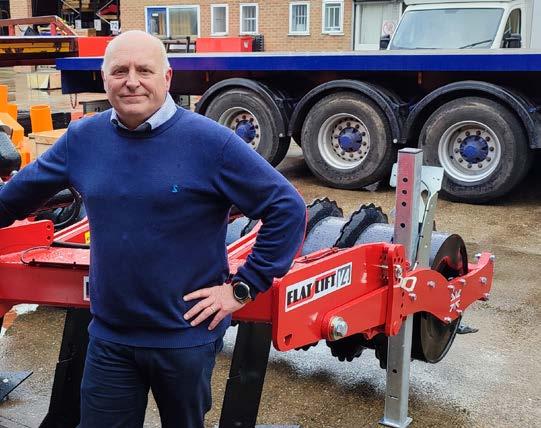
37 Landwards Autumn 2023
Membership Matters
Wrekin Branch
Farmdroid FD20 –Autonomous seeder
Reported by Bill Basford
June saw members and guests on a field visit to view a Farmdroid operating north of Shrewsbury courtesy of Agri-droid, the company operated since 2021 by farmers, Chris and Ed Bretell.

Chris introduced the concept of the FD 20 as a robotic autonomous unit to our group, stressing their farming need for a chemical free solution, whilst producing organic crops, particularly fodder beet, for supply across the country. He explained that they were in their fourth season of use having imported their first unit solely for their use but now had established Agri-droid as importers of units for supply in the local area around Shropshire – Borders –Cheshire where some 9 machines were reported as operating successfully.
He explained that the 12 row, 6m wide unit operated through an electrical drive system, charging from solar cells mounted about the functional part of the unit. Initially the unit is used as a seeder with 6L capacity seed boxes and whilst sowing the location of each seed or seed groups is recorded digitally based on RTK GPS, thus when an area is sown the unit can return to immediate weeding without waiting for seeds to emerge – as with a camera system. Lightweight horizontal weeding tines operate inter row as well as a knife type coulter weeding intra row.
Perhaps the surprise of the visit was that the soil engaging parts were
such light duty but considering the short interval between return cycles when weeding the soil has little time to become consolidated. Little and often being the answer, possibly with 4 weeding cycles of any area securing a weed ‘free’ situation prior to the fodder beet leaves shading the inter and intra row areas. A single hand roguing pass sometimes may be needed afterwards.
The unit was reported as handling slopes pitching of 8%. And when rolling 5%. It operates currently by needing a field perimeter track
and thus a field line is established before being left to autonomous function. Its motion is controlled by contact cables for any obstacle and with a rain sensor to determine traffic ability and thus continuance or cessation of function. The unit is linked to a mobile phone app with on line real time video, full reporting and control possible from the phone. Each unit operates at approx. 950 m/h forward speed when under auto control, manual control allows slightly faster operation. The unit which weighs 900 kg is transported to and from field via a simple 3 pt
38 Landwards Autumn 2023
linkage pallet tine frame, this will allow the area learning function to be carried out via tractor transport around the field before setting the unit in motion.
A variety of crops have been grown both at the base farm and by other users locally such as sugar beet, beetroot, onions, spinach, rapeseed and several herbs.
Chris reported that their yields (organic) had more than doubled since using the Farmdroid, in fact others had found increases higher
than that. With the demand for organic fodder being strong, he suggested payback in 2-3 years on yield alone being possible as each unit can manage 20 ha. If such an area had to be weeded by other weeding systems – lay down prone manual or walk through hoe weeding then the labour savings were suggested as massive.
Future modifications, improvements were suggested as closer row spacing (22.5 – 75 cm currently), faster operation and even spot spraying
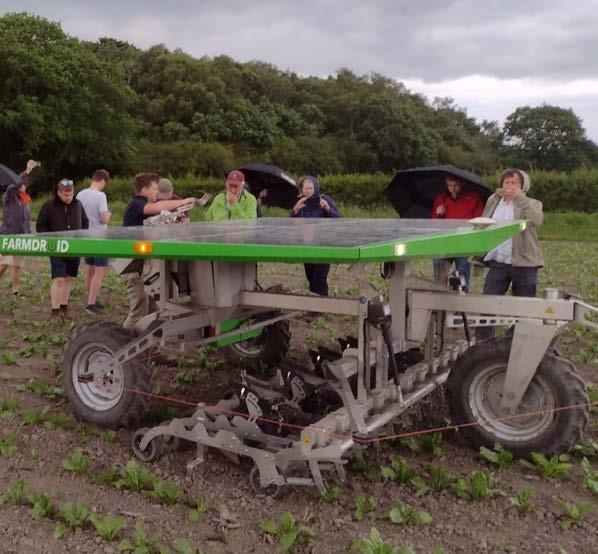
when organic production is not involved.
There are many videos available on YouTube as well as further information on the company’s website.
https://www.agri-droid.co.uk
The evening visit was a great success even though a massive thunderstorm challenged summer apparel!
39 Landwards Autumn 2023
Membership Changes
1/05/23 to 31/07/23
Admissions
Fellow
Member
Professor Matt Bell (Western)
Mr Richard Rudge (Western)
Professor Andy Collop (Western)
Mr Trevor Hicks (Western)
Mr Ian Coleman (West Midlands)
Dr Robrecht Schmitz (Germany)
Mr Odeyemi Adeyanju (Western)
Associate Member
Affiliate
Mr Graham Stirling (Scottish)
Technician
Student
Cranfield University
Temiloluwa Ayo
Marvellous Etuk
Marine Perard
Munster Technological University
Ruaira Hanrahan
Coleg Sir Gar
Lewis Somerfield
University of Cambridge
Garry Clawson
Atlantic Technological University
Eoin McLoughlin
Darragh Gilligan
Harper Adams University
Henry White
Readmission
Member
Miss Poppy Burrough (East Midlands)
Mr Richard Larke (South East Midlands)
Associate Member
Deaths
We have recently learned of the death of the following members and we send our condolences to their family and friends:
Mr Kevin Kilmurray – AIAgrE
Mr Kilmurray joined the Institution as an Affiliate member in January 2015.
Mr J David Stephenson – MIAgrE
Mr Stephenson was a member of the Institution for just over 50 years. He joined the Institution as an Affiliate in April 1972 and upgraded to Associate Member in June 1985. He then went onto Member grade in January 2001.
Transfers
Fellow
Mr Jonathan Booty (East Midlands)
Member
Mr Richard Ford (Southern)
Mr Richard Carter (East Anglia)
Mr Benjamin Osborn (South Eastern)
Mr Ashley Knibb (Southern)
Mr Peter McFerran (West Midlands)
Dr Sven Peets (Wrekin)
Member
Miss Jessica Evans (South Eastern)
Mr James Perry (East Anglia)
Mr Joshua Fulton (Southern)
Mr Philip Pinn (East Anglia)
Mr Jack Ball (Yorkshire)
Affiliate
Engineering Council
Registrations
CEng
IEng
Mr Jonathan Pocock (West Midlands)
EngTech
Miss Poppy Burrough – transfer of EngTech registration from IET
Engineering Council
40 Landwards Autumn 2023
CEnv
Long service certificates
2023
35 years 25 years
Forthcoming Events
William Ford
Charles Kindred
Edward Worth
Thomas Queen
Edward Fox
Western Branch event - Lackham College Award
Award presentation to Lackham College. More information to follow ...
20/09/2023 - To be confirmed
Lacock Chippenham SN15 2NY
IAgrE West Midlands Branch Visit - AVL Technical Centre, Coventry
A technically interesting facility. More information to follow ...
10/10/2023 - 18.45 meet Tech Centre, Unit 1, Viggen way, Ansty Park, Coventry CV7 9RD
Western Branch Visit to KTwo
Visit to KTwo trailer. More information to follow. ...
01/11/2023 - To be confirmed
41 Landwards Autumn 2023
Name Grade Date of Anniversary Andrew
MIAgrE 28 July 2023 Richard
AMIAgrE 18 August 2023 Thomas
AMIAgrE 4 June
Martin
MIAgrE 3 July
Gavin
MIAgrE 3 July
John
MIAgrE 3 July
AMIAgrE 4 August
Charles Poole
2023
2023
2023
2023 James Edward Holmes
2023
Commercial Members
Ace Aquatec Ltd
16B City Quay, Camperdown Street, Dundee, DD1 3JA
Agri-EPI Centre
Easter Bush, Roslin, EH25 9RG
Alois POTTINGER UK Ltd
15 St Marks Road, Corby, Northampton, Northants, NN18 8AN
Agricultural Engineers Association (AEA)
Samuelson House, 62 Forder Way, Hampton, Peterborough, PE7 8JB
AGCO Ltd
Stoneleigh, Abbey Park, Kenilworth, Warwickshire, CV8 2TQ
Alvan Blanch Development Co
Chelworth, Malmesbury, Wiltshire, SN16 9SG
Amazone Ltd
Orchard Farm, Hurst Lane, Aukley, Doncaster, South Yorks, DN9 3NW
Autoguide Equipment Ltd
Stockley Road, Hedington, Calne, Wiltshire, SN11 0PS
BAGMA
225 Bristol Road, Birmingham, B5 7UB
Case New Holland
Cranes Farm Road, Basildon, Essex SS14 3AD
City and Guilds
1 Giltspur Street, London, EC1A 9DD
City Farm Systems Ltd
25 Hepplewhite Close, High Wycombe, Bucks, HP13 6BZ
Claas UK Ltd
Saxham, Bury St Edmonds, Suffolk, IP28 6QZ
David Ritchie (Implements) Ltd
Carseview Road, Suttieside, Forfar, Angus, DD8 3EE
Douglas Bomford Trust
The Bullock Building, University Way, Cranfield, Bedford, MK34 0GH
DSL Systems
Adbolton Hall, Adbolton Lane, West Bridgford, Nottingham, NG2 5AS
Fullwood
Grange Road, Ellesmere, Cheshire, SY12 9DF
Househam Sprayers
Roughton Moor, Woodhall Spa, Lincs, LN10 6YQ
HSS Hire
Building 2, Think Park, Mosley Road, Manchester M17 1FQ
John Deere Ltd
Harby Road, Langar, Nottinghamshire, NG13 9HT
Knight Farm Machinery
Wireless Hill Industrial Estate, South Luffenham, Rutland, Leicestershire, LE15 8NF
Kubota UK Ltd
Dormer Road, Thame, Oxfordshire. OX9 3UN
Magna Specialist Confectioners Ltd
Magna House, Stafford Park 3, Telford, Shropshire, TF3 3BH
Marks & Clerk LLP
90 Long Acre, London, WC2E 9RA
Mastenbroek Ltd
83 Swineshead Road, Boston, Lincs, PE21 7JG
Merlo UK Ltd
The Paddocks, Headlands Business Park, Salisbury Road, Ringwood, Hampshire BH24 3PB
National Fluid Power Centre
Turner Road, Worksop, Notts, S81 7AE
NFU Energy Services
Stoneleigh Park, Kenilworth, Warwickshire, CV8 2LS
Nick Young Tractor Parts
Unit 2, The Forge, Moor Road, North Owersby, Market Rasen, Lincolnshire, LN8 3PR
Ploeger UK Ltd
Holt Road, Fakenham, Norfolk, NR21 8JH
Reesink UK Limited
1-3 Station Road, St Neots, Huntingdon, PE19 1QF
Shelbourne Reynolds
Shepherds Grove Ind Estate, Stanton, Bury St Edmunds, Suffolk, IP31 2AR
Spaldings Limited
25-35 Sadler Road, Lincoln, Lincolnshire, LN6 3XJ
Spraying Systems Ltd
Headley House, Headley Road, Hindhead, Surrey, GU26 6UK
Teagle Ltd
Blackwater,Truro, Cornwall, TR4 8HQ
Witham Oil and Paint Ltd
Outer Circle Road, Lincoln, LN10 6YQ
42 Landwards Autumn 2023
Academic members
Askham Bryan College
Askham Bryan, York, YO23 3FR
Berkshire College of Agriculture
Hall Place, Burchetts Green, Maidenhead, Berks, SL6 6QR
Bishop Burton College
York Road, Bishop Burton, Beverley, HU17 8QG
Brooksby Melton College
Asfordby Road, Melton Mowbray, Leics, LE13 0HJ
City College Norwich
Easton, Norwich, Norfolk, NR9 5DX
Coleg Cambria – Llysfasi
Rhuthin, Sir Ddinbych, LL15 2LB
Coleg sir Gar
Gelli Aur Campus, Llandeilo, Carmarthenshire, SA32 8NJ
Cranfield University
Cranfield, Bedfordshire, MK43 0AL
Duchy College
Stoke Climsland, Callington, Cornwall, PL17 8PB
Greenmount College
CAFRE, 22 Greenmount Road, Antrim, Northern Ireland, BT41 4PU
Harper Adams University
Newport, Shropshire, TF10 8NB
Hartpury College and University
Gloucester, GL19 3BE
Lincoln Institute of Agri-Food Technology, Lincoln University, Lincoln, LN6 7TS
Manchester University
School of Electrical and Electronic Engineering, C39, Sackville Street Building, Sackville Street, Manchester, M1 3WE
Munster Technological University
Tralee Clash, Tralee, Co Kerry, Ireland
Myerscough College
Bilsbarrow, Preston, Lancashire, PR3 0RY
Newcastle University
King’s Gate, Newcastle Upon Tyne, NE1 7RU
Plumpton College
Ditchling Road, Lewes, East Sussex, BN7 3AE
Reaseheath College
Reaseheath, Nantwich, Cheshire, CW5 6DF
Royal Agricultural University
Cirencester, Gloucester, GL7 6JS
Salesian Agricultural College
Pallaskenry, Co Limerick, Ireland
Sparsholt College
Sparsholt, Winchester, SO21 2NF
SRUC – Auchincruive
Auchincruive Estate, Ayr, KA6 5HW
Suffolk New College
Suffolk Rural Campus, Charity Lane, Otley, Suffolk, IP6 9EY
University of Manitoba
Winnipeg, Canada, MB R3T 2N2
Warwickshire College Group
Warwick New Road, Leamington Spa, CV32 5JE
Wiltshire College Lackham
Lacock, Chippenham, Wiltshire, SN15 2NY
Writtle University College
Lordship Road ,Writtle, Chelmsford, Essex, CM1 3RR
43 Landwards Autumn 2023
“To make global encouraging innovation
The new strategy
Secretary Alan Plom outlines the Trust’s new Strategy for 2023-26, and beyond
The new strategy was announced at the Trust’s Jubilee Anniversary event held in September last year. Developed to guide the Trust into the next few years, this new approach has now been agreed by the Board. The next step is ‘What do we do with it?’.
It describes how the the Trust will be more proactive, rather than our traditional passive approach to requests for funding research. It was instigated because Trustees could see gaps and opportunities for collaboration and funding. This new approach will also enable more cost-effective use of our limited funds.
The aim remains “To advance knowledge, understanding, practice, and competence in the application of engineering and technology to
achieve sustainable agricultural, food and biological systems for the benefit of the environment and mankind”, but this is now supplemented by clearer ‘Vision’ and ‘Mission’ statements. These emerged from a project commissioned at Cranfield University, to review our objectives and core values.

• Vision: “To make a positive difference to enhance global food security and climate change by encouraging innovation in agricultural engineering”.
• Mission: “To provide resources to help advance the application of engineering and technology to achieve sustainable agricultural, food, and biological systems, for the benefit of the environment and mankind and with a link to the UK.”
Key Themes
The Strategy is based on four key ‘themes’:
• People - Enhancing skills, supporting education and continuous professional development
• Technology - Contributing to science and innovation
• Collaboration - Working with others, co-sponsorship
• Communication - Sharing information on priorities and outcomes of sponsored research.
44 Landwards Autumn 2023
DBT
Investment in these themes will give more ‘value for agricultural engineering’ by:
• Investing in the right people –to stimulate and maintain interest in the profession and develop individuals’ skills, knowledge and experience in agricultural engineering.
• Identifying and encouraging suitable projects that will provide a training environment and advance innovation and scientific understanding.
• Encouraging and stimulating collaboration between researchers and other funders/ sponsors within the agricultural engineering sector.
The Trust’s Priorities
In future, up to 50% of the charity’s funds available for research (around £80k/year) will be allocated to ‘priority’ areas, initially guided by horizon-scanning research carried out as a Group MSc Project, also at Cranfield.
Proposed Priority Research Topics
(for 2023-26)
• Developing technologies, control systems and strategies that directly improve the performance of sustainable agricultural production systems.
• Improving use of energy sources in agricultural situations, particularly in relation to climate change objectives (Net Zero)

• Developing innovative food production methods in controlled environments.
Next steps – ‘Summit’ workshop
The trustees have their own views but are keen to engage all parts of the industry to identify specific topics for research within these areas and to explore opportunities for enhancing collaboration, including between the different centres for research, academia and training; potential sponsors (Government, private and charity); manufacturers and farmers.
To facilitate this wider involvement of policy-formers and decision-makers in the discussion on how to deliver the 4 elements of our strategy, and in the context of climate change and the various national policies emerging from recent Government-led reviews, a ‘Summit’ (for an invited audience) is being arranged in collaboration with Agri-EPI. Although in some circles the agri-robotics is touted as the saviour of all the challenges faced by farmers, but the big question remaining is “What do farmers do until the technology is adequately developed, priced and taken up by farmers”.
This essential and timely event, entitled “Delivering sustainable farming practices through agricultural engineering”, is proposed at Agri-EPI’s Midlands Agri-Tech Centre, located at Harper Adams University, in Newport, Shropshire, in early November.
These challenges include:
• What products and services do farmers need NOW - as well as in the future - to implement sustainable practices?
• The role of data in future farming, and how can we harness it?
• How can we enhance the available solutions and future developments in technology?
• How can we encourage and enable education and training for future agricultural engineers –from academia (for essential learning and development) through to dealer technicians (to support technology) and farmers (to use it!) – ie to provide the skills needed to educate, train and maintain the ‘tech’.
• What does the industry (including associated organisations and Government) need to do differently?
For further information, see the Trusts website:
www.dbt.org.uk
Or contact the Secretary Alan Plom via: enquiries@dbt.org.uk
You can also follow: @BomfordTrust on ‘X’ and ‘LinkedIn’, for news , opportunities and events
45 Landwards Autumn 2023
make a positive difference to enhance global food security and climate change by innovation in agricultural engineering”
International Conference on Agricultural EngineeringLAND.TECHNIK AgEng
2023
November 10-11 2023 Hannover, Germany, Exhibition Ground
The Future of Agricultural Engineering
The LAND.TECHNIK International Conference on Agricultural Engineering is the official opening event of biannual AGRITECHNICA, the world’s most prominent exhibition of agricultural machines and equipment.
This year, LAND.TECHNIK will feature technical presentations covering the newest developments and innovations in machines, technical concepts and agricultural methods. With 1100 participants in 2019, LAND.TECHNIK has established itself as the premier forum for the international community of agricultural engineers. This also makes it the ideal opportunity to meet with experts from the fields of product design, management and science to exchange ideas and experiences as well as to discuss the
future of agricultural engineering.
Main topics:
• Tractor Drive Trains, Tyres, Concepts
• Combine Harvester, Harvesting Machines, Sensors
• Automation, Prepare for Autonomy, Test Concepts
• Fuel Cells, Safety, Electrical Agricultural Machines
• Environmental Improvement, Sustainability, Cultivation
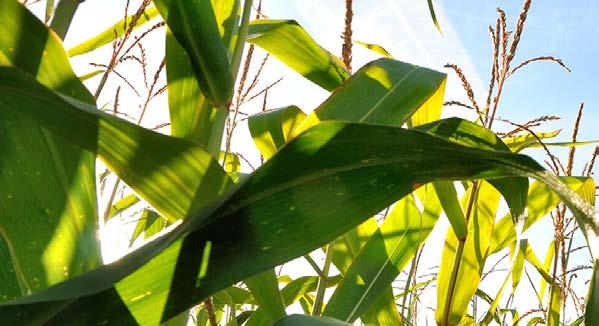
• Sensors and Detection, Simulation, Concepts and Agronomy
The industry gets together Discuss developments, innovations and trends with leading experts in the field. High quality presentations Experience new developments in the agricultural industry this year in more than 60 professional presentations and discover
innovations in drivetrain technology, tractors, combine harvesters, powertrains, harvest technology, automation in agriculture, renewable energy and digitalization.
Exchange of professional knowledge Network with colleagues from around the world and from a variety of specialisations.
Co-Organised with EurAgEng

For more information:
https://www.vdiconference.com/ ageng/
46 Landwards Autumn 2023 EurAgEng News
This year, LAND.TECHNIK will feature technical presentations covering the newest developments and innovations in machines, technical concepts and agricultural methods.
Save the date - for AgEng 2024
It is with great pleasure to inform you that Athens will host, in 2024, the AgEng2024 International Conference of EurAgEng. A promising and challenging event where delegates will have the stage to exchange knowledge and ideas, present innovations, and discuss the perspectives for agricultural engineering for the sustainable future of agriculture.

The host organiser, the Hellenic Society of Agricultural Engineers, is dedicated to succeeding in offering a well-organized conference promoting and coordinating scientific research for the production, technology, and applications of Agricultural Engineering in Greece and the international area.
We invite you to Athens, from 1 to 3 July 2024, to attend and be a part of the AgEng2024 Conference.
AgEng2024 aims to foster strong collaboration between academia, agricultural organisations, research institutions, and industry, with the shared goal of advancing research and driving innovation in this field. To achieve this target, AgEng2024
will include a scientific program comprising plenary talks from distinguished speakers, special sessions, tutorials as well as oral and poster presentations; special sessions include Publishing with Biosystems Engineering, while a technical tour will provide to the participants hands-on experience in interesting applications. Indicative topics include (but not limited to):
• Artificial Intelligence, data processing and management
• Automation, robotics and sensor technology
• Biomass and feedstock utilisation
• Circular Economy, Education and Rural development
• Energy and bioenergy
• Integrated and sustainable Farming systems

• Post-harvest technologies
• Smart farming & precision agriculture
• Soil, land and water engineering
We are looking forward to welcoming you to AgEng2024! On behalf of the Local Organising Committee
Professor Nikolaos Katsoulas
For more information see:
https://eurageng.eu/events/ ageng-2024
47 Landwards Autumn 2023
Austrian test centre with new capabilities
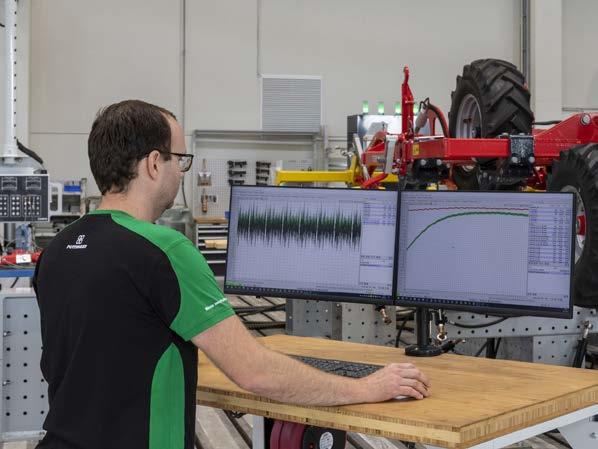
The Technology and Innovation Centre TIZ Landl Grieskirchen (AT), which has IAgrE commercial member Pöttinger as one of the main tenants, has completed a second phase of expansion. The new hall, TIZ 3, was able to start operation in February 2023.
The latest testing equipment right from the start
The Technology and Innovation Centre was founded in 2002. There are three shareholders who each hold one third of the shares: a group of three local municipalities (Grieskirchen, St. Georgen, and Tollet), Pöttinger Landtechnik GmbH, and the location agency Business Upper Austria.
TIZ Landl and Pöttinger as the
lead company are running a state-of-the-art research and testing centre in close cooperation. Over the years, the centre has gained an excellent reputation internationally. The Pöttinger test centre offers prototype construction, testing, measurement and inspection technology. The latter is used not only for Pöttinger’s agricultural machinery, but also for running pilot projects for external customers in cooperation with TIZ Landl GmbH.
During development of agricultural machinery the test centre has the task of generating knowledge for the transfer to series production and collaborating with testing companies to guarantee the best possible working result. Additionally, durability testing is carried out on the test beds that covers the full service life under operational conditions such as those found in the field.
48 Landwards Autumn 2023 International News
The Pöttinger test centre offers prototype construction, testing, measurement and inspection technology.

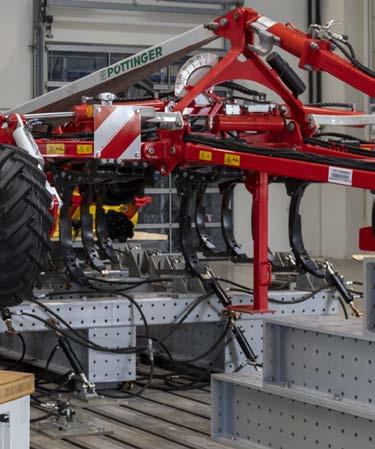
Real operating conditions simulation
Increased capacity
The new part of the building (TIZ 3) increases capacity and provides 1,800m² of additional floor space. 1,300m² of this is dedicated to testing technology, with the remainder for prototyping. The equipment includes a 360m² component testing station for individual test bed set-ups both for customers of TIZ Landl GmbH and Pöttinger agricultural machinery. The testing cylinders are supplied with power by a hydraulic power unit with an output of 400 kW. Two 10 tonne cranes are able to lift fully assembled machines onto the test bed set-up. On the first floor there are modern offices and meeting rooms on 500m2 of floor space where the Pöttinger and TIZ Landl GmbH testing engineers work closely together on running and planning the testing projects.
Whole machine analysis
The TIZ Grieskirchen houses the most modern component testing equipment in Europe. Pöttinger uses it to run intensive testing of its agricultural machines. TIZ Landl GmbH also performs testing jobs for third-party companies from many different countries which benefit from the testing expertise in agricultural technology.

In particular, the new extension adds a workload test bed for comprehensive analysis of entire machines. It also provides access to test scenarios for e-mobility including testing of high-voltage components.
Markus Baldinger, Pöttinger Managing Director explains the motives: “In addition to investing in our modern production plants, we have a strong focus on the possibilities for testing and inspecting our agricultural machinery. This additional investment in TIZ 3 sees us fulfilling our promise to our customers regarding high quality, strength, reliability and durability.”
The tests that simulate real operating conditions save up to 75 per cent of the time and costs compared to practical tests performed in the field. The result is that there is now plenty of new space created in one of the most modern component testing centres in Europe to offer even more capabilities.
49 Landwards Autumn 2023
Research Round up
Rothamsted to collaborate with new £3 million digital twin research network
The funding, secured by The Alan Turing Institute, will encourage new partnerships on and innovation through a UK-wide digital twin research network across academia, industry and other stakeholders
Rothamsted is helping to administer a £3 million grant awarded to The Alan Turing Institute by UKRI to help transform the UK’s national capability in digital twinning.
The funding will help establish a UK-wide inter-disciplinary research network with stakeholders from academia, government and industry. It builds on the Turing’s established expertise in digital twins, such as the recently announced Turing Research and Innovation Cluster in Digital Twins (TRIC-DT).
The network will help Rothamsted develop its North Wyke Farm Platform digital twin project. The site is the UK’s most measured livestock farm, and the creation of a digital twin will enable researchers to test new hypothesises on how changes in
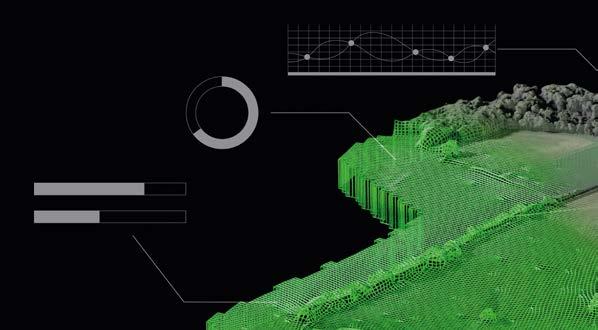
farm practices could improve the sustainability of grassland livestock systems. “The new network is really significant,” said Prof Chris Baker, head of Intelligent Data Ecosystems at Rothamsted and on the executive committee of the new project. “It will catalyse collaboration with a range of new partners opening up exciting opportunities to build our capacity and learn from what others are doing.”
The new network community has been identified as urgently needed to fill gaps in the underpinning research relating to digital twins. The award will run for five years and will help develop game-changing breakthroughs that will lead to a new generation of intelligent, resilient, and trusted digital twins.
Net-zero Cabinet Secretary sees SRUC climate research in action
Mairi McAllan MSP with SRUC Professor Wayne Powell during her visit to SRUC Barony, Scotland’s Cabinet Secretary for Transport, Net Zero and Just Transition has been learning about some of the cutting-edge climate change research being carried out at SRUC. On a visit to the Barony Campus near Dumfries, Mairi McAllan MSP also found out more about the SRUC-led Digital Dairy Chain, as well as the organisation’s work with NatureScot to deliver a unique peatland restoration course.
Meeting with senior staff at SRUC, including Professor Wayne Powell,
50 Landwards Autumn 2023
The new network community has been identified as urgently needed to fill gaps in the underpinning research relating to digital twins.
Principal and Chief Executive; Provost Jamie Newbold and Mary Thomson, Vice-Principal – Skills and Lifelong Learning, Ms McAllan saw first-hand SRUC’s investment in disruptive technology, including its N2 Unit.

The N2 Unit uses revolutionary technology to practically eliminate methane and ammonia emissions from slurry production. Infrastructure is now in place, with the unit expected to be fitted later this year.
On a tour of the campus, Ms McAllan was shown how SRUC is blending its forestry, woodland and environmental expertise to optimise land management practices, while it is also undertaking proof of principle research into on-farm hydrogen generation utilising renewable sources of energy and waste water.
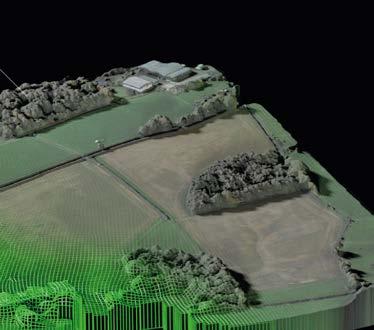
51
Mairi McAllan MSP with SRUC Professor Wayne Powell during her visit to SRUC Barony
Landwards Autumn 2023
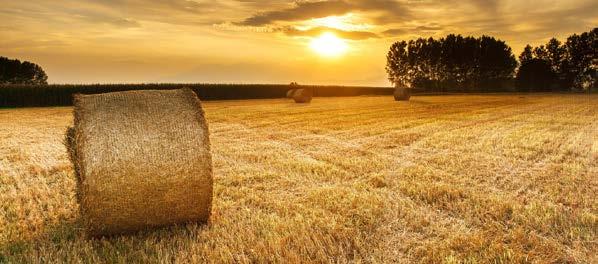

Landwards Conference 2023 AGRICULTURE HORTICULTURE FORESTRY ENVIRONMENT AMENITY Agricultural engineering - feeding the future LANDWARDS CONFERENCE 2023 Wednesday 1 November - online 10:30 - 14:00 Book now: https://iagre.org/events/Landwards-Conference-2023 www.iagre.org e: secretary@iagre.org t: 01234 750876

 Dr Emma Wilcox Chief Executive Officer of the Society for the Environment
Dr Emma Wilcox Chief Executive Officer of the Society for the Environment





 Andy Newbold Hon FIAgrE Editor andy@farm-smart.co.uk
Andy Newbold Hon FIAgrE Editor andy@farm-smart.co.uk































































